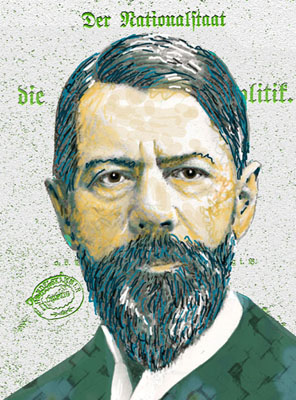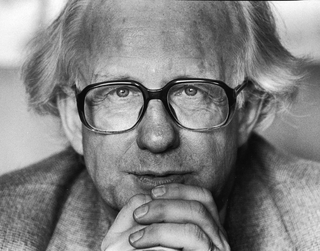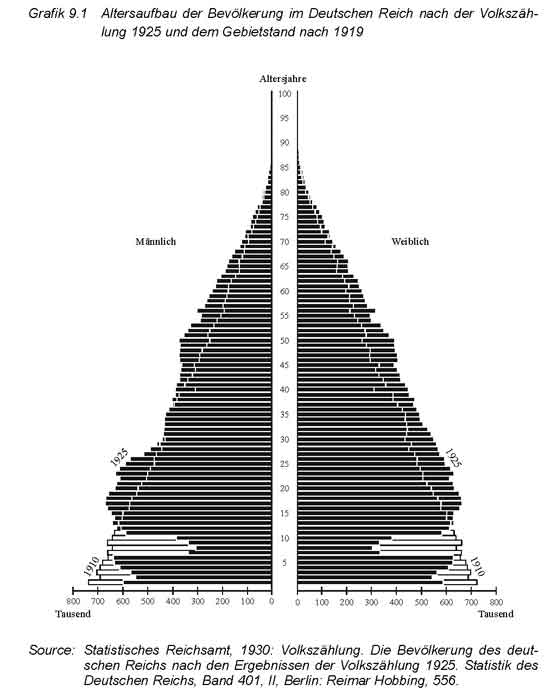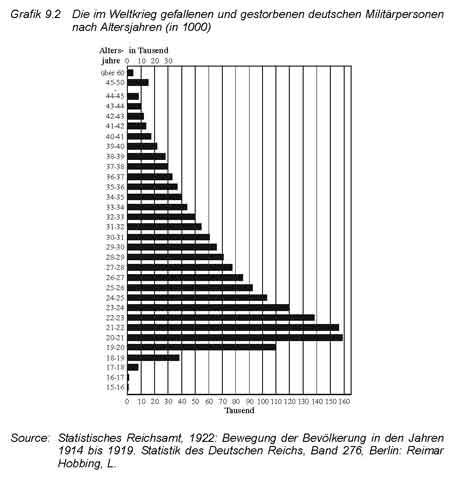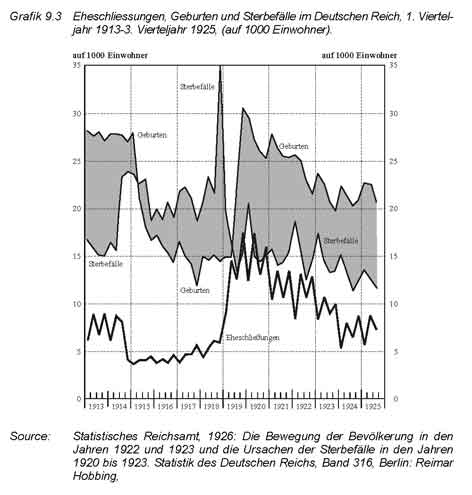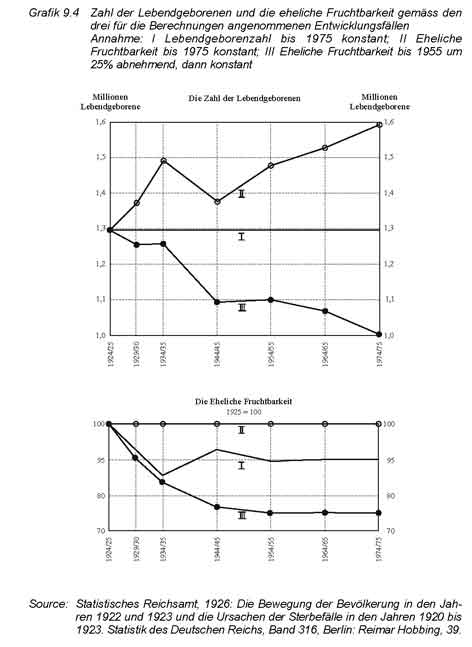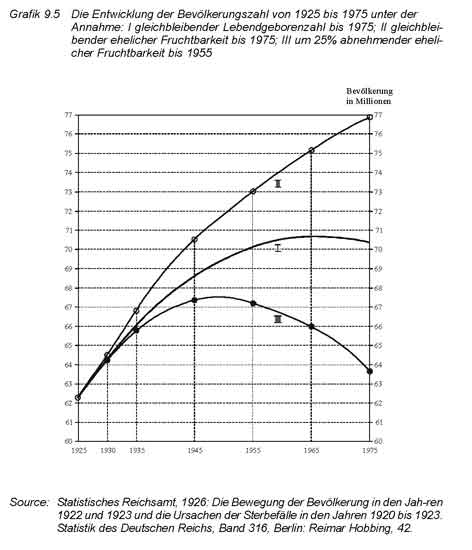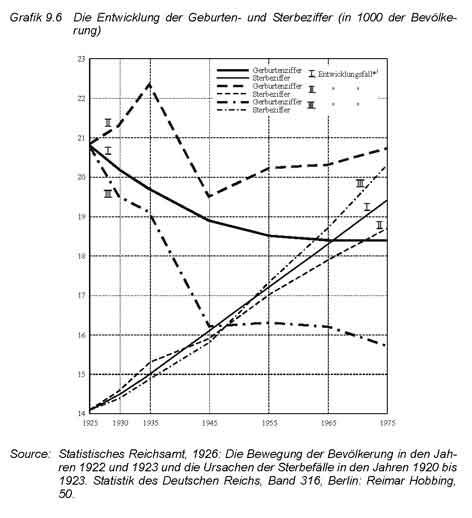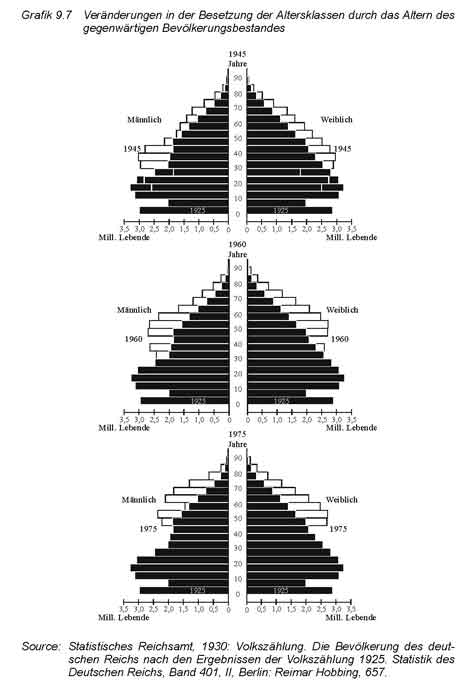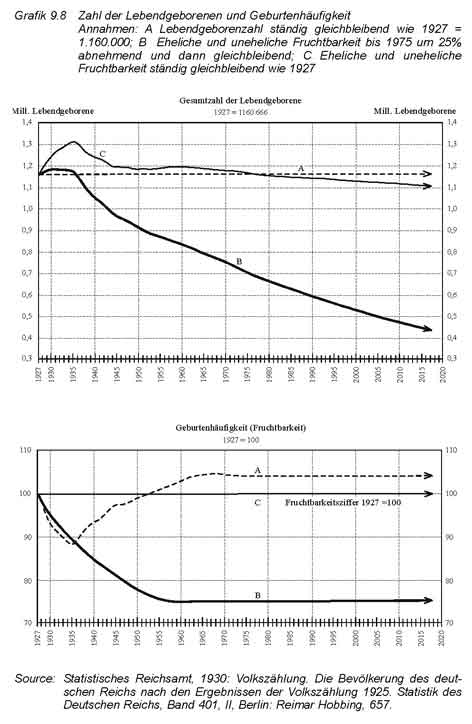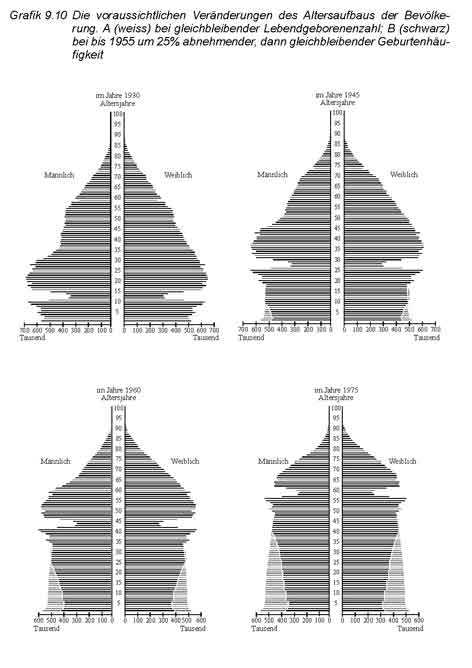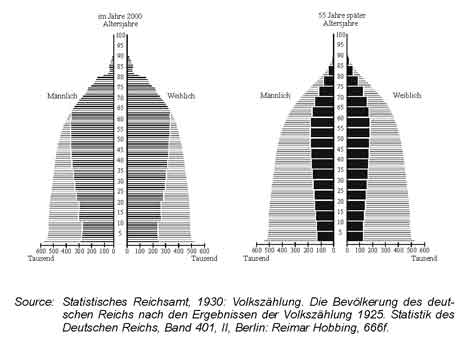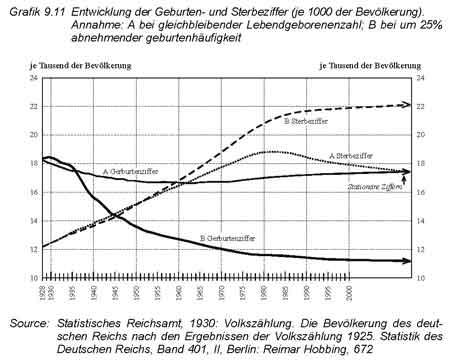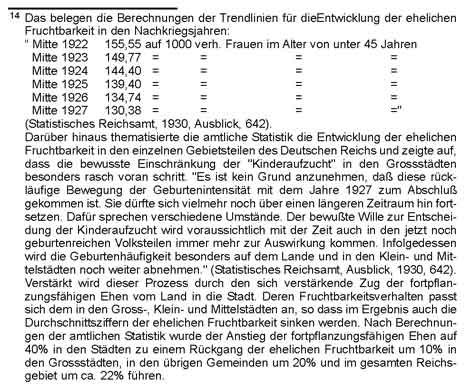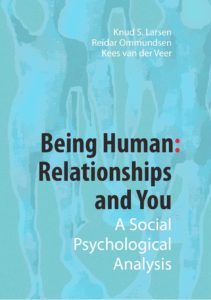
December 2018: Being Human. Relationships and You will be published completely online soon: Being Human – Contents
Many years ago two boys were walking home from school. They were seven years old, lived in the same neighborhood, but went to different grade schools. Although living close to each other they had not met before running into each other on this day on the road leading up the hill to their neighborhood. Both seemed quite determined to assert themselves that day, and soon they began pushing each other that gradually turned to wrestling, and attempts to dominate. After what seemed hours, the two little boys were still rolling down the surrounding hills as the sun was going down. Neither succeeded in achieving victory that day. In fact, they never again exchanged blows but became the best of friends. Today it is more than 50 years later, and their friendship has endured time and distance. Friendship is like a rusty coin; all you need to do is polish it at times!
In this essay we shall examine the research on attachment, attraction and relationships. The intrinsic interest in these fields by most people is shared by social psychologists, and attachment, attraction, and love relationships constitute one of the most prolific areas of investigation in social psychology. The early attachment theory advanced by Bowlby (1982) emphasized the importance of the field when he suggested that our attachments to parents to a large extent shape all succeeding relationships in the future. Other research focus on exchange and communal relationships and point to the different ways we have of relating to each other. The importance of relationships cannot be overemphasized since we as humans have a fundamental need to belong. Relationships also contribute to the social self as discussed in the book, and effects social cognition discussed in the same (see: at the end of this article). The variables that determine attraction may be understood theoretically as functions of a reward perspective.
The importance of relationships is demonstrated by findings that show that among all age groups relationships are considered essential to happiness (Berscheid, 1985; Berscheid & Reis, 1998). The absence of close relationships makes the individual feel worthless, powerless, and alienated (Baumeister & Leary, 1995; Stroebe & Stroebe, 1996). Our very humanity is defined by our relationships (Bersheid & Regan, 2005).
1. Attachment: The start to relationships
This chapter is about the development of attachment, intimate relationships between adults, and the road leading toward love relationships. No greater love has a person than giving his life for another. This idea from the Bible brings to mind the passion of deep commitment and the willingness to sacrifice, even in the ultimate sense. This willingness to sacrifice is one manifestation of love, but as we all know there is much more to relationships and love.
The research described in the following pages concerns early attachment, and attraction and love between adults. These relationships may be institutionalized by marriage, or (registered) partnership, or take some other form (living-apart-together) in relationships. Since the vast majority of romantic relationships exist between heterosexual partners we describe the journey from attraction to romantic relationship from this perspective. There is little research so there is no way to know, however, there is no convincing reason to assume that this journey is completely different for homosexuals.
Most people will experience the delirious feelings of infatuation and love sometime in their lives. What is love? How can we achieve love? And how can we build these feelings into lasting relationships? Are there ways we can improve our chances for satisfying long-lasting and happy relationships? This chapter will show that there are behaviors to avoid, but that we can also contribute much to lasting attachments. Long-lasting romance depends on positive illusions and bringing novelty and renewal to our intimate relationships.
We live in a changing world. Although in many parts of the world couples are still united through arranged marriages, more and more modern communications are changing the ways people relate, for example learning about other culture to value freedom or the individual right to choose one’s spouse. Computers provide platforms from which to initiate relationships, and opportunities to screen for important characteristics prior to any encounter. Does that take away something of the mystery of liking and loving relationships? Some do feel that how we encounter and meet people should remain in the realm of the mysterious.
However, as we shall see in this chapter, learning to like and commit to one another follows predictable patterns. The fact that divorce rates increase in the western world, suggests that we could all benefit from a greater understanding of how relationships develop, and how to make them enduring and satisfying. To give up one’s life for another is a noble commitment, but to live one’s life for the beloved is a different, but equally high calling. How do we move from the initial encounter of liking to romance and love and lasting commitment? We shall see that liking and love are universal behaviors, although cultures affect how they are expressed.
In this chapter we shall discuss the research from initial attachments to long lasting relationships. Is there a basic need to belong? Does evolutionary thinking contribute to our understanding of the universality of attachment? There is evidence, as we shall see, that we all need to be connected to others, to experience a network of varying relationships. These needs are universal, present in all cultures and societies. Our needs to belong motivate our unconscious and conscious thoughts, and our behavior in the search for satisfying relationships. Without such relationships we suffer the pangs of loneliness with negative physical and psychological consequences.
1.1 An evolutionary approach to attachment
Many textbooks in psychology refer to feral children as evidence that negative consequences occur when a child grows up without normal human attachments. The child Victor was found in 1800 in the French village of Saint-Sernin. He was believed to have grown up in the forests without human contact, and proved devoid of any recognizable human characteristics. Initially he refused to wear clothes, understood no language, and never showed human emotion. This “wild boy of Aveyron” was taken into the care of Jean Itard, who devoted considerable energy to teach Victor language and human interaction. He did eventually learn some words, but never developed normal human interaction or relationships (Itard, 1801; 1962). Do feral children demonstrate the essence of human nature in the absence of relationships? We can see from the story of Victor, and that of other feral children, that what we describe as human is forged in our relationships with others. Without these interactions there is little discernable human in our behavior. Without relationships provided by parents, family, and society, we are without language with which to communicate, and without civilization to teach appropriate norms for behavior, and we have no “human nature”. We are human because of our relationships.
1.2 Early attachment forms the basis for our adult relationships
What are some of the deciding factors that enable us to establish interpersonal relationships? Interpersonal relationships are essential to human satisfaction and happiness, and refer to the bonds of friendship and love that hold together two or more people over time. Interdependence is manifested by how individuals spend significant time thinking about each other, and engage in common activities, and have shared histories and memories. Although central to our understanding of what it means to be human, social psychology has a short history of studying relationships (Hartup & Stevens, 1997). Since we cannot experiment with relationships among humans, research takes a different form. In research on relationships we face different problems with methodology than encountered elsewhere in experimental social psychology (Karney & Bradbury, 1997). Since research may affect self-awareness and the relationship ethical concerns must dictate sensitivity in the questions asked allowing us to use primarily the interview and survey methods.
Harlow (1959) performed a famous experiment with baby rhesus monkeys that supported the conclusions drawn from the studies of feral children: social isolation is traumatic and prevents normal development. In this classic study baby monkeys were raised without any contact with a mother or other monkeys. They were provided two “mother substitutes”; one was a wire feeder, and the other feeding substitute was softer and covered with terry cloth. The importance of contact was shown by the baby monkeys clinging to the terry cloth “mother”, and when frightened rushing to this substitute for comfort. Like the feral children these monkeys were abnormal when they approached adolescence or adulthood. They displayed high anxiety, could not playfully interact with peers, and failed to engage in normal sexual behavior. It would appear that social interaction, particularly with parent figures, is essential for normal functioning in adulthood. What we describe as human nature would evaporate in the absence of relationships as we are socialized by our interactions. The universality of the desire to belong would suggest a biological basis similar to other biological needs.
Some will suggest that the need to belong is indeed part of our evolutionary heritage (Bercheid & Regan, 2005). No other species display a longer dependency period than humans, and we need nurturing relationships to survive. Parents who in the past failed to display essential nurturing behavior did not produce offspring that survived. We are all descendants of relationships that took parenting very serious. It is possible to perceive bonding from the very beginning of life. Initially only the mother establishes relationships by gazing at the infant, who in turn responds by cooing and smiling. That is the beginning of all subsequent bonding in the child’s life. Later as the child grows, other bonds are established with the father and other family members. Throughout life a normal human being will seek out relationships responding to a biological need for companionship.
Baumeister & Leary (1995) proposed five criteria to demonstrate the fundamental biological nature of the need to belong. First, since relationships make a direct contribution to survival, an evolutionary basis is supported (Simpson & Kenrick, 1998). Evolutionary causality would require us to accept that even romantic bonds with all the giddiness and mystery are primarily vehicles that create conditions for reproduction and survival of the infants (Ellis & Malamuth, 2000; Hrdy, 1999). Without that special attachment between mother and infant the child would be unable to survive or achieve independence (Buss, 1994).
A second criterion for the evolutionary basis of relationships is the universality of the mother-child and romantic lover interdependence. As we shall see, such relationships are found in all cultures expressed with some variations. Thirdly, if relationships are a product of evolution, it should have a profound effect on social cognition. There is much support that our relationships to a significant degree define who we are, our memories, and the attributions we make in varying situations (Karney & Coombs, 2000; Reis & Downey, 1999). Fourthly, if need to belong is similar to other biological drives the desire for relationships should be satiable. When deprived we should manifest searching behavior similar to that which occurs for food or water when deprived of these essentials. Once our relationships needs are satisfied, we are no longer motivated to establish new connections (Wheeler & Nezlek, 1977), but if deprived we will seek substitutions for even close family relationships (Burkhart, 1973). Finally, according to Baumeister and Leary, if we are deprived chronically the consequences are devastating. There is a great deal of evidence that relationships are fundamental to our sense of physical and psychological well-being, and to how happy or satisfied we are (Myers, 2000b).
For those deprived, the evidence is uncontroversial. Divorced people have higher mortality rates (Lynch, 1979), whereas social integration is associated with lower death rates (Berkman, 1995). Suicide rates are higher for the divorced (Rothberg & Jones, 1987), whereas breast cancer victims are more likely to survive with support groups (Spiegel, Bloom, Kraemer, & Gottheil, 1989). Other research has shown that social support strengthens our immune and cardiovascular systems (Oxman & Hull, 1997). The literature is very clear on this. With social support we do better against all that life throws against us, without relationships we are likely to lead unhappy lives and die prematurely.
1.3 Biology versus culture
There is no more controversial issue than deciding in favor of an evolutionary or a cultural explanation of attraction. Evidence will show that women in all cultures tend to prefer partners who possess material resources, whereas men prefer youth and beauty. However, in the human species the male is also physically larger, stronger, and more dominant. This has led to male control over material resources. Since women are more vulnerable, they are naturally more concerned with meeting these material needs. (Eagly & Wood, 1999; Wood & Eagly, 2002). The cross-cultural consistency in gender preference may simply reflect size differences and the gender based control of economic resources.
The evolutionary perspective asserts that gender based preferences have reproductive reasons. Symmetrical men are thought attractive because they signal good reproductive health. Some intriguing studies show that women who ovulate show a preference for the smell derived from “symmetric” men (Gangestad & Thornhill, 1998; Thornstead & Gangestad, 1999). Women in the ovulatory phase also prefer men who have confident and assertive self presentations (Gangestad, Simpson, Cousins, Carvar-Apgar, & Christensen, 2004). There is no definitive solution to the biology versus culture argument. Perhaps what matters is, regardless of the origin, these gender differences exist and persist.
1.4 The experience of loneliness
The psychological distress we feel when deprived of social relationships is loneliness (Perlman & Peplau, 1998). For each individual there exists an optimal number of relationships depending on age, and perhaps other factors. We join clubs, political organizations, special interest groups, and religious organizations in an effort to remove deficit in social relationships. We can have many acquaintances, but still feel lonely. Some of us feel lonely being in a crowd where social relations are plentiful, but intimacy is absent. Clearly, the answer to loneliness is not just the quantity of relationships, but whether the connections satisfy emotional needs. Some people have few relationships, and enjoy the experience of being alone. If we find in ourselves good company, our needs for others are diminished. Those who have rich emotional lives are less dependent on others for satisfaction of emotional needs.
However, many people feel the wrenching experience of loneliness. In our society it is very prevalent (Perlman & Peplau, 1998) with 25 percent reporting feeling very lonely and alienated. Some causes of loneliness are situational due to common life changes in our mobile societies. We move often, and when we do we lose some of our relationships. For example, new opportunities for work require our presence in another part of the country or abroad, and young students attend universities away from family and friends. In these and in many other cases people lose their known social network and support groups. On some occasions we lose relationships permanently due to the death of loved ones, and the resulting grief can produce feelings of prolonged loneliness.
Other people suffer from chronic loneliness. These are people who describe themselves as “always lonely”, with continuous feelings of sadness and loss. Chronically lonely people are often in poor health, and their lives are associated with many issues of social maladjustment including alcohol abuse and depression. Loneliness is a form of stress and is associated with increased health problems resulting in death (Hawkley, Burleson, Berntson, & Cacioppo, 2003).
Weiss (1973) described two forms of loneliness. Social loneliness is produced by the absence of an adequate social network of friends. The answer to that kind of loneliness is establishing new contacts, perhaps by involvement in the community. Emotional loneliness, on the other hand is the deprivation felt from the absence of intimacy in our lives. We all need at least one significant other with whom we can share intimate thoughts and feelings, whether in the form of a friend or spouse. An emotionally lonely person may be well connected, but still feel the gnawing disquiet even in the midst of a crowd.
As we noted in the introduction, our childhood experiences predispose us toward a variety of relationship problems or enjoyments of life. Children of the divorced are at risk for loneliness, and may develop shyness and lower self-esteem (Brehm, Miller, Perlman, & Campbell, 2002). On the other hand, being in a satisfying relationship is a primary guard against feelings of loneliness, this is especially true for those who commit themselves to lifelong relationships (e.g. marriage) (Pinquart, 2003).
Demographic variables also have an effect on loneliness. Those who are poor struggle more with all forms of insecurity, and have less possibilities for participating in social relationships. For example due to lack of money poor people often cannot participate in social activities. Age is also a factor. Most may think that old age is a time of loneliness as people lose relationships to death or other causes. Some research (Perlman, 1990) however, shows that teenagers and young adults suffer most from isolation. Youth is a time when biology is insistent on connecting with others, particularly with a member of the opposite sex, and the absence of intimate relationships is felt most keenly. Some young people feel not only lonely, but rejected and ostracized. When that occurs we see the rejection play out in severe anti-social behavior as in the case of the school shootings of recent years (Twenge, Baumeister, Tice, & Stucke, 2001).
Interacting with people affects our emotional lives. We feel better being around others, particularly in close or romantic relationships (Bolger, Davis, & Rafaeli, 2003; Delespaul, Reis, & DeVries, 1996). Unhappiness in lonely people, however, may not be due to the absence of people alone. Unhappy friends are not rewarding to be around, and they might be lonely because they are unhappy, rather than unhappy because they are lonely (Gotlib, 1992).
Our need to belong is manifest in all cultures and societies. It is obviously functional to the infant who needs protection. However, adults also could not function in society without supportive relationships. These needs to belong are universal, and if not satisfied produce many negative results. Further, our relationships help form our self-concept (chapter 2) and our most significant behaviors. Our relationships largely determine how we think about the world, and our emotional well-being.
1.5 The beginnings of attachment
Infants demonstrate stubborn attachments to their primary caregiver. This is sometimes manifested by total devotion to the mother, gazing and smiling when in contact, crying when she leaves the room. As the child gets a little older the pattern may continue, initially having nothing to do with the rest of the family. The attachments of the child may gradually change and she or he becomes fond of the father, grandmother and other relatives, proceeding normally from long attachment to the mother, to establishing new relationships with other people in her or his life. Attachment refers to the positive emotions expressed in the presence of the caregiver, the feeling of security in the child, and the desire to be with the caregiver, initially exclusively, but later with other significant others (Bowlby, 1988; Cassidy & Shaver, 1999).
The personal security and emotional warmth offered to the child is different for each caregiver. Therefore infants develop different attachment styles that in turn have profound effect on adult relationships. Ainsworth, Blehar, Waters, & Wall (1978) proposed three infant attachment styles. The secure attachment occurs when the caregiver is available, and the infant feels secure, and when the child’s emotional needs are met. The avoidant attachment occurs when the caregiver is detached, unresponsive to the infant, and when in some cases the infant is rejected. This type of attachment leads to premature detachment and self-reliance. When the parent figure is at times available, but at other times not, and therefore is inconsistent in meeting the emotional needs of the child, the result is an anxious-ambivalent attachment style. This type of infant may be anxious and often feel threatened.
Essentially the three attachment styles develop in response to the caregiver’s emotional behavior; i.e., how consistent the emotional needs are met, and how secure the child feels as a consequence. From the perspective of evolutionary theory, attachment has obvious survival value for the infant. If mothers did not find the baby’s cooing and smile endearing, and if the infant did not find her presence so reassuring, the lack of attachment could be disastrous for the infant. Infants and small children cannot survive without parental attention, so both the caregiver’s behavior and infant’s responses are very functional to the survival of the human species.
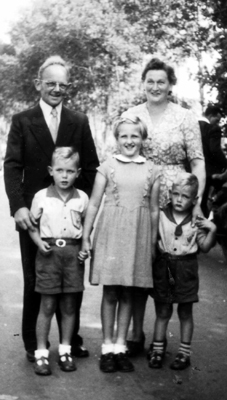
1.6 Attachment styles of adults
How comfortable are we with our relationships, and to what degree can we form secure and intimate relations with family, friends, and lovers? Hazan & Shaver (1987) found that adults continue with the same attachment styles adopted as infants. Whether an adult is secure in relationships, and can foster shared intimacy, depends on the three attachment styles described above. Psychoanalysis asserted that our childhood experiences have profound effects on adult behavior. The attachment theorist likewise believes that the relationship styles developed as infants are stable across a person’s lifetime. Infant attachment styles determine whom we associate with as adults and the quality of our relationships. Some longitudinal studies have in fact demonstrated attachment styles developed early in life determine how we later relate to our love partners, our friends, and eventually our own children (Fraley & Spieker, 2003; Kirkpatrick & Hazan, 1994). Other researchers however, have found changes between infant and adult attachment styles (Baldwin & Fehr, 1995). The infant’s relationship with the primary caregiver is critical to the success of adult relationships. However, there is some hope that we can change from infant maladaptive styles to more functional adult behaviors and relationship satisfaction.
Life events may also influence our ability to form secure relationships. Traumatic events that separate us from beloved family members through death or divorce, affect our ability to develop intimate relations. So does childhood abuse, or family instability (Brennan & Shaver, 1993; Klohnen & Bera, 1998). Within intimate relationships the type of attachment has profound effects (Collins & Feeney, 2000; Fraley & Shaver, 1996). How we say goodbye, for example, at train stations and airports is reflective of our attachment styles. Avoidant romantic partners spent less time giving embraces, whereas those who were anxious expressed sadness and fear when separating. How we express attachment may vary with culture. Being reserved is not universally diagnostic of having an avoidant attachment style.
1.7 Secure attachment styles bring many benefits
Secure individuals bring out the best in others. Even when significant others display negative behaviors such as unjustified criticisms, the secure person will see that behavior in a positive light (Collins, 1996). A secure and positive outlook brings its own rewards. These include, not surprisingly, more relationship satisfaction. Secure partners are less likely to break up the relationship, and more likely to stay married, they experience fewer marital tensions, and generally fewer general negative outcomes (Shaver & Brennan, 1992; Mikulincer & Shaver, 2003). On the other hand, anxious people are more likely to perceive threat. They view life events in pessimistic ways leading to depression, substance abuse, and eating disorders. Our early bonds with caregivers matter a great deal as we move on in life. These attachment styles have significant effects on our current relationships, and our own sense of well-being. Secure life styles based on a good start in life produce healthier relationships, and good personal health.
2. Culture and socialization produce different relationships
Fiske (1991; 1992) proposed a theory of relationships that suggest that we behave in four distinct ways in defining who we are, how we distribute resources, and how we make moral judgments. A communal relationship put the interest of the group ahead of that of the individual. Types of groups in this category include families, or close social allies. In families what we contribute depends on what we can offer, and what is right to receive depends on the needs of the individual informed by benevolence and caring. In a family, children are different and require different resources. One child may be intellectually gifted, and parental care may be shown by support for education. Disproportionate support for one child may result in fewer resources for another child. In communal groups or families, resource distribution is decided by the needs of each member, and desire to help all.
In the authority ranking groups the status and ranking hierarchy is what matters. Members of these groups are aware of the status differences, and roles tend to be clearly specified. Military organizations are examples, but so are modern capitalist organizations that depend on a top down authoritarian structure. Tribal organizations are usually also authoritarian, and the chief determines who does what, and in what way performance is rewarded or punished.
The third type of relationship is equality matching. These relationships are based on equality in resources and preferred outcomes. Many friendships and marriages are governed by some norm of equality. Members should have on the average the same rights, constraints or freedoms. The essential question asked in response to any requests or demands is: is it fair? Is it also applicable to the capitalist market system based on the market pricing relationships. Fourth, relationships emerging from the market economy are governed in principle by equity, by what is considered fair. Salaries should be based on merit and equity, where the compensation received is proportional to the quality and effort made by the individual (for example if you cannot pay for medical help, then you get none). While Fiske claims these four types are universal, some relationships are emphasized in a particular culture. Capitalist societies rely on market pricing relationships, and increasingly we are seeing similar relationships in current and formerly socialist countries.
2.1 The child in the relationship
Many social psychologists find attachment theory useful in understanding the relationships between adults both platonic and romantic (Hazan & Shaver, 1987). They are interested in what ways adult love relationships are similar to the attachment patterns of infants. It seems that the intense fascination with the love object, parent or lover, is similar. The adult lover may gaze with intense fascination into the eyes of the beloved, much as the infant gazes into the eyes of the mother. Lovers feel distress at separation, as do infants when the mother leaves the room. In both situations strong efforts are made to be together, spend time together and avoid separation.
Adult love relationships also fall into the three attachment patterns described for children. One study showed that the majority of US citizens (59 %) are securely attached, whereas 25 percent are avoidant, and 11 percent are anxious-ambivalent (Mickelson, Kessler, & Shaver, 1997). There are differences as well, as adult relationships involve reciprocal care, and in some cases sexual attraction. Still, the mother would not gaze at the infant unless she found it very rewarding, and there is some reciprocal behavior there. The mother loves her child and is rewarded by adorable gazing and smiles of the infant.
Some psychologists feel that this early model of love becomes a working framework for later relationships. The infant who has secure attachments with parents comes to believe that similar relationships can be established as an adult, that people are good and can be trusted. On the other hand the anxious-ambivalent attachment may produce fear, rejection of intimacy, and distrust in the relationship in the adult. The burden of the generations occurs when a parent passes on to the next generation the attachment style he developed as an infant. The rejection a mother experienced as an infant may become the working model for her child rearing when she is a parent.
There is hope for victims of dysfunctional attachment styles. Sometimes an adult love relationship is so powerful that it can overcome any negative experiences from childhood. On the whole however, absent any major event affecting attachment, there is great stability in attachment styles across the life span (Fraley, 2002; Collins & Feeney, 2004). Secure adults are comfortable with intimacy and feel worthy of receiving affection from another person. As a consequence, they also perceive happiness and joy in their love relationships built on self-disclosure and shared activities. It should come as no surprise that secure individuals also have positive perceptions of parents as loving and fair. Later in life secure people develop more satisfying relationships. Secure people experience more satisfying intimacy and enjoyment, and feel positive emotions in their relationships (Tidwell, Reis, & Shaver, 1996). When life becomes stressful, secure individuals provide more mutual support, and are more effective and responsive to the partners needs (Feeney & Collins, 2001; Feeney & Hohaus, 2001). Avoidant persons, on the other hand, are often uncomfortable in getting intimate, and never develop full trust in the love partner. They spend much time denying love needs, do not self disclose, and place more importance on being independent and self-reliant. The anxious- ambivalent person wants to become intimate, but worry that the other person does not feel the same. Anxious adults tend to be obsessed with the object of love, experience emotional highs and lows, feel intense sexual attraction, and jealousy. They often feel unappreciated by their partners, and view their parents as being unhappy.
2.2 The transfer effect in our relationships
The transfer effect is well known in clinical psychology. In the effort to help the patient the therapist allows the patient to transfer feelings from some other significant other to the therapist. Temporarily the therapist becomes the father figure, or some other significant person in the therapeutic relationship. We have all met people who remind us of others. The authors have all had the experience of meeting someone who was certain to have met one of us before, or believed we were closely related to someone they knew. Does the professor of this class remind you of a favored uncle or aunt? Chances are that you will transfer positive feelings toward the professor, and with such an auspicious beginning the outcome may be very good for your study. The relational self-theory is based on the idea that our prior relationships determine how we feel toward those who remind us of such significant others from our past.
Andersen & Chen (2002) developed the idea of relational self-theory to demonstrate how prior relationships affect our current cognitions and interactions with others. They hypothesized that when we encounter someone who reminds us of a significant other from the past we are likely to activate a relational self that determines our interactions with the new person. Meeting people who remind us of past significant others even has emotional consequences. In one study the researchers assessed the participant’s emotional expressions after being exposed to information that resembled a positive or negative significant other from the past (Andersen, Reznik, & Manzella, 1996). The participants expressed more positive emotion as judged by facial expressions after being exposed to information about a past positive significant other, and more negative facial expressions after exposure to the information of a negative person.
Our past relationships also determine our current interactions. When we interact with someone who reminds us of someone else it affects our self-concept and behavior (Hinkley & Andersen, 1996). Encountering such a person alters how we think of ourselves, and the past relationship may affect our behavior at the automatic level (Andersen, Reznik, & Manzella, 1996). This finding helps explain our preference for some individuals, and our rejection of others. Positive emotions result from being in the presence of people who remind us of previous positive relations. However, we should remind ourselves that these gut feelings are not the consequence of actual behavior or interactions. Any immediate dislike may have more to do with unpleasant relations of the past, than the person with whom you are currently interacting.
2.3 Social cognition and previous relationships
We construe the world through processes of social cognition. Previous relationships affect how we come about this construction of the world. This is logical when we realize that relationships form the basis of many of our memories. In one study, for instance, participants were better able to remember information based on relationships than other sources of information (Sedikides, Olsen, & Reis, 1993).
We tend to be optimistic about self and close friends believing that the outcomes of life will be positive for ourselves and those with whom we relate (Perlof & Fetzer, 1986), and we include close others in our attributional biases assessing more positive traits and behaviors to partners in close relationships. Success for self and friends is attributed to dispositional causes, while failures are attributed to the situational environment (Fincham & Bradbury, 1993). Close others become in a very real sense a part of the self-concept (Aron & Aron, 1997; Aron & Fraley, 1999). A relationship helps to expand the self-concept by utilizing the resources and characteristics of the other person. These characteristics then become part of the self-concept. This became very visible to us when a close follower of a prominent leader we knew took on characteristics of the admired leader, even to the point of mimicking his speech patterns. Later this same individual married the former wife of the leader, and served as the director of the leader’s institute. Relationships are functional because of the self-concept expansion (Wegner, Erber, & Raymond, 1991). So-called transactive memory is demonstrated when partners know each other so well, that they can complete stories told by the other partner, and remember more information than two randomly paired people. Partners also collaborate in remembering facts. In driving to locations one partner may have good understanding of direction and long distance goals, and the other may remember specific street locations. Collaborative memory is based on such close relationships. Social cognition is central to an understanding of social psychology and will be discussed in detail in chapter 4.
3. Liking someone: the start of relationships
Why do we like some people and not others? Our past relationships with parents and close significant others have profound effects on attachment and liking, but that only partly answers the question of attraction. Another answer to what motivates people to embark on a relationship is its contribution to survival and success. However, the average person probably does not evaluate attraction to others on such a calculating basis. That is to say, when it comes to understanding deeper levels of motivation, we like those who are associated with rewarding events and whose behavior is intrinsically rewarding. We dislike those whose behaviors are a burden to us. At the level of motivation, conscious or unconscious, we seek to maximize our rewards and minimize costs. We seek relationships and continue in these if the rewards exceed the costs and therefore yield a profit (Kelley, 1979; Kelley & Thibaut, 1978; Rusbult, 1980).
3.1 Antecedents of attraction
Propinquity, similarity and physical attraction have been studied extensively by social psychologists. Many would consider these to be obvious variables in interpersonal attraction. Yet, in our culture we say, “beauty is only skin deep”, thereby denigrating the potential influence of physical attractiveness. As we shall see beauty is much more than skin deep, and along with similarity and propinquity have profound effects on whom we like, and on our relationships and social successes.
3.2 Propinquity: we like those living near us
Some of the very earliest research on attraction focused on the proximity of relationships (Festinger, Schachter, & Back, 1950). These early researchers performed a sociometric study in a housing complex for married students at MIT called Westgate West. The residents were asked to name their three closest friends. The majority of the respondents named people who lived in the same building, even though other housing units were nearby. Even within the building proximity was a striking factor, with 41 percent naming their next-door neighbors as best friends, 22 percent named those living two doors away, and only 10 percent pointed to those living at the end of hallways as close friends. The critical factor was the chance of coming in contact. Festinger et al. called this functional distance.
Although there are exceptions when we come to dislike people living next door the result of Festinger and colleagues is a very optimistic finding of social psychology. It suggests that most people have the capacity for friendships if only given the opportunity. This might even be extended to the most intimate relationships. Rather than waiting for the one and only knight on the white horse, or Cinderella, as romantic illusions would have you do, propinquity findings would suggest that there are millions of potential partners if only given the chance for encounters.
3.3 Mere exposure and familiarity
What is it about being given the chance to meet that leads to liking? Some research would indicate that proximity brings on a sense of familiarity that leads to liking (Borstein, 1989; Moreland & Zajonc, 1982; Zajonc, 1968). In the literature it is called the “mere exposure effect”. The more we see people the more we like them, so proximity is about familiarity. Then why does familiarity produce liking? Is there some sense of security that comes from knowing that the familiar produces no harm? Is it an evolutionary mechanism where the familiar reduces threat? Do we have an innate fear of the unfamiliar? Are strangers a threat, because we do not know enough about them to predict their behavior? Perhaps it is. Perhaps we like those who are familiar, because we can predict their behavior and they are non-threatening. Milgram (1970) suggested that the fear of living in large cities among strangers was eased by seeing the same faces or “familiar strangers” – as they passed on their way to work.
A study by Moreland and Beach (1992) showed that the “mere exposure” produced liking. They had female confederates attend class sitting in the first row. There was otherwise no interaction between the female confederates, the instructor, or other students. Yet, when asked at the end of the term, the students rated these women highly for both liking and attractiveness. The literature supports the idea that familiarity promotes liking (Bornstein, 1989; Moreland & Zajonc, 1982). There is one caveat. If you find yourself instantly disliking what you consider an obnoxious person, exposure will intensify that effect (Swap, 1977).
Still a large amount of literature has been published supporting the “mere exposure” effect (Borstein, 1989; Zajonc, 1968). For example there are strong correlations between the frequency of exposure to a variety of objects and liking. Flowers that are mentioned more frequently in our literature are liked more than those mentioned less frequently, e.g., violets are liked more than hyacinths. People, at least in the US, also like pine trees more than birches, and like frequently mentioned cities more than those less well known. Zajonc argues that it is the mere exposure effect. However, on the other hand perhaps people write more about violets than hyacinths because they are liked more? How do we explain the preferences for different letters in the English alphabet that correspond to the frequency of appearance in writing (Alluisi & Adams, 1962)? We also tend to see letters in our own name more frequently, and have a greater liking for these letters (Hoorens, Nuttin, Herman, & Pavakanun, 1990).
In another study the more the participants were exposed to words they did not understand (Turkish words or Chinese pictographs) the more they liked them (Zajonc, 1968). Still, even “mere exposure” effects must have an explanation in term of rewards or the absence of threats that familiarity brings from repeated exposure. Zajonc (2001) recently explained the “mere exposure’ effect as a form of classical conditioning. The stimulus is paired with something desirable, namely the absence of any aversive conditions. Therefore over time we learn to approach those objects considered “safe’ and avoid those that are unfamiliar.
Computers are often used to make contact these days. Keeping in mind that it is the “functional distance” which is important, how does computer technology contribute to establishing new relationships? (Lea & Spears, 1995). All modern tools of communication can be used either for ethical or unethical purposes. There are predators online who lie or manipulate to take advantage of innocent young people. It is not safe. Online the individual has no way to confirm the truth of what another person is saying. Person-to-person we can check for all the nonverbal signals that we have learned from experience indicating truthfulness and trust. On the other hand, we do not have to worry much about rejection in Internet relationships, so perhaps we have less to loose and therefore can be more honest online? We can more quickly establish intimate relationships, but we may in the process idealize the other person. Only face-to-face can we decide what is real, and even then we may idealize, although as we will see this can be healthy for long term relationship survival.
Proximity effects means that we often marry people who live in the same neighborhoods, or work for the same firm (Burr, 1973; Clarke, 1952). The variable is optimistic about meeting someone because our world of potential relationships is unlimited. If our eyes are open we can find a mate somewhere close by, certainly within walking distance. Perhaps proximity also points to other forms of interpersonal similarity. Generally people living in the same neighborhoods often also come from similar social classes, ethnic groups, and in some parts of the world from the same religious groups. Proximity may therefore also be another way of pointing to similarity as a basis for liking. Familiarity provides the basis for sharing, and the gradual building of trust (Latané, Liu, Bonevento, & Zheng, 1995). The vast majority of those who have had memorable interactions leading to intimacy lived either at the same residence or within one mile from the trusted person.
The mere exposure effect can also be discerned in peoples’ reactions to their own faces. Faces are not completely symmetrical as most of us display some asymmetry where the left side of the face does not perfectly match the right. Our face to a friend looks different from that we see our selves. The mirror image with which we are familiar is reverse from that which the world sees. If familiarity or mere exposure has an effect, our friends should like the face to which they are accustomed, whereas the individual should also like the mirror image with which he is familiar. Mita, Dermer, & Knight (1977) showed that the participants liked best the face with which they were most familiar.
3.4 Proximity and anticipating the cost of negative relationships
Proximity, moreover, reduces the cost of interaction. It takes a great deal of effort and expense to maintain long distance relationships. As a result of our work we have relationships in different parts of the world. As the years go by it is more and more difficult to continue with friendships that when we were young we thought would last forever. When you do not see someone in the course of daily activities it takes more effort, and may be costly in other ways. Long distance relationships take more dedication, time, and expense.
Proximity may exert pressures toward liking. It is difficult living or working with someone we dislike. That cognitive dissonance may cause us to remove stress by stronger efforts of liking the individual. Therefore, even the anticipation of interaction will increase liking, because we want to get along (Berscheid, Graziano, Monson, & Dermer, 1976). When we know we will interact with someone over time we are likely to focus on the positive qualities, as the alternative is too costly. Think of working with a boss you do not like, how costly that could be? Therefore we put our best foot forward when we meet people who may become part of our daily lives. Even the anticipation of interaction with others produce liking. Why else would people make extraordinary efforts to be nice at “get acquainted parties” at work, or in new neighborhoods? Putting your best foot forward is a strategy to produce reciprocal liking.
4. Similarity: rubbing our back
We like to be massaged, and therefore like those who validate and reinforce who we are and what we believe. The research literature supports this proposition (Bercheid & Reis, 1998; Ptacek & Dodge, 1995; Rosenblatt & Greenberg, 1988). It will come as no surprise that we tend to find our spouse among those who are similar to us on many different characteristics including race, religion, and political persuasion (Burgess & Wallin, 1953). Showing again the opportunistic nature of our most intimate relationships, similarity in social class and religion were the strongest predictors of liking.
Similarity of religion or social class may just be frequency or proximity factors, as the likelihood of exposure is greater for these categories. Similarity in physical attractiveness also plays a role and personality characteristics, although to a lesser extent (Buss, 1984). In a classic study, Newcomb (1961) showed that after a year of living together, student’s liking of roommates was determined by how similar they were. In other studies where the participants thought they were rating another participant (in fact a bogus participant) either similar or dissimilar, the similar person was liked more (Byrne, 1961; Tan & Singh, 1995). The similarity effect holds true across a variety of relationships including friendship and marriage.
Similarity in education and even age seems to determine attraction (Kupersmidt, DeRosier, & Patterson, 1995). Not only are friends similar in social class and education, but also gender, academic achievement, and social behavior. A meta-analysis of 80 separate studies showed moderate relationships between similarity and attraction (AhYun, 2002). Today dating services are established on the principle that similarity is good and functional in relationships. A good match means finding someone who is similar. Dating services try to match after background checks and participant surveys of values, attitudes, and even physical appearance (Hill & Peplau, 1998). Those participants who were matched in attitudes toward gender roles and sexual behavior had the most lasting relationships, one year and even 15 years later.
4.1 How does similarity work?
As mentioned above similarity is a potent variable in friendship and mate selection. What are some of the mechanisms that produce this effect? Similarity gives a common platform for understanding, and that in turn promotes feelings of intimacy essential for trust, empathy and long lasting relationships (Aron, 1988; Kalick & Hamilton, 1988). If the issue is important only those with the same or similar values are acceptable. So attraction is selective and we rarely encounter those whose views are different. In relationships where the participant committed to someone with different values, or where the parties successfully hide their views, similarity could still be the outcome. Typically long time married couples have similar views because over time they persuade the partner to change his/her mind. Social influence may also change our views over time and produce more similarity.
We find pleasure in our relationships with similar others because they confirm our beliefs and the value of our person. When we meet with likeminded people, they validate our inner most values and expressed attitudes. The rest of the world may cast doubt on our beliefs, and may question who we are as persons, but the likeminded validate our ideologies and personal achievements. Even our physiological arousal corresponds to our liking someone (Clore & Gormly, 1974). Similarity allows for functional relationships and for more effective communication. When we are with those who are similar, communication is effortless, since we do not have to be on guard for disagreement or rejection.
4.2 A common social environment
Of course the social environment also has a selectivity bias. People meet likeminded people at Church, or those with similar occupational interests at work. In many cases the apparent similarity is caused by the selectivity of our social environment. A politically progressive person does not attend meetings of the Ku Klux Klan (a racist group) in order to find a soul mate. A longitudinal study of married couples showed that couples became more and more similar over time as they continued to persuade and experience a shared environment (Gruber-Baldini, Shai, & Willis, 1995).
We choose our friends from our social environment. In college we find our friends among those who are on the same track academically and can be of mutual aid (Kubitschek & Hallinan, 1998). Being in the same environment produces shared experiences and memories that serve to bond people. We perceive similarity and from that conclude that the other person will like us, thereby initiating communication (Berscheid, 1985). It is reinforcing to meet someone with similar views, as they validate our feelings of being right (Byrne & Clore, 1970). At the same time and for the same reasons we find those who disagree unpleasant (Rosenbaum, 1986; Houts, Robins, & Huston, 1996). As a result of having a common basis, similarity in personality traits provides for smooth communications and interactions between people, therefore similarity is less costly.
4.3 We like those who like us: reciprocal liking
Reciprocal liking is even a more powerful determinant of liking than similarity. In one study a young woman expressed an interest in a male participant by eye contact, listening with rapt attention, and leaning forward with interest. Even when told she had different views the male participants still expressed great liking for the woman (Gold, Ryckman, & Mosley, 1984). Regardless whether we show by means of verbal or non-verbal responses, the most significant factor determining our liking of another person is the belief that the person likes us (Berscheid & Walster, 1978; Kenny, 1994). When we come to believe someone likes us we behave in ways that encourage mutual liking. We express more warmth, and are more likely to disclose, and behave in a pleasant way. So liking someone works like a self-fulfilling prophecy. Expressing liking elicits pleasant behavior and reciprocal liking (Curtis & Miller, 1986).
4.4 Personal characteristics associated with liking
Physical attractiveness is very culturally bound. In some societies voluptuous women are considered beautiful, while in our society the fashion industry and the media define attractiveness as being thin. When it comes to personality based characteristics two factors lead to liking. We like people who show warmth toward others, and people who are socially competent (Lydon, Jamieson, & Zanna, 1988). Warm people are those who have an optimistic outlook on life and people. We like them because they are a source of encouragement in an otherwise discouraging world. Warm people are a pleasure to be around and therefore rewarding. In one study (Folkes & Sears, 1977) the researchers had the participants listen to an interviewee evaluate a variety of objects including movie stars, cities, political leaders. Sometimes the interviewees expressed negativity toward these objects, in other cases positive views. The participants expressed a greater liking for the interviewee who expressed positive views, i.e. displayed warmth toward the rated people and objects.
4.5 Communication skills
Likewise we like more the socially skilled. Social intelligence can be demonstrated by being a good conversationalist. Skilled speakers were seen as more likeable, whereas boring communicators were not only rated as less likeable, but also as less friendly and more impersonal (Leary, Rogers, Canfield, & Coe, 1986). Obviously communication skills are essential to long-lasting relationships. We are especially fond of people whose ways of relating to others are similar to our own (Burleson & Samter, 1996). Those with high communication skills saw interactions as complex with highly valued psychological components. People with low skill levels saw communications as more straightforward and less complicated. To communicate at the same level is a very important aspect of attraction and liking. Operating at the same skill level is rewarding, as we feel empathy and understanding. Those who do not share the same level of communications are less likely to develop long-lasting relationships (Burleson, 1994; Duck & Pittman, 1994).
4.6 Complementarity: Do opposites attract?
The importance of similarity suggests “birds of a feather flock together”. But are we not also told that opposites attract? Do tall dark men not prefer short attractive blonds? What about the assertive person meeting the less dominant individual? Or the person who has a rich fantasy life marrying the realist? Are there not times when opposites attract because in some ways we complement each other? Certainly, for sexual relations the vast majority of humankind seeks the opposite sex, only a minority is attracted to similarity. The masculine and feminine is the supreme example from nature that opposites attract.
Complementary personality traits produce liking for only a few personality traits (Levinger, 1964; Winch, 1955). On the whole, however, most studies fail to find evidence that complementarities attract in relationships (Antill, 1983; Levinger, Senn, & Jorgensen, 1970; Neimeyer & Mitchell, 1988). When complementarities lead to attraction, it appears to be a rare exception to the dominant effect of similarity. Even in cases where personalities are complementary on some traits, they have many more similar traits in common.
4.7 Ethnicity and relationships
Ethnic identification is only one dimension of similarity. Interracial couples are similar in other significant ways, in attitudes and values. The dissimilarity is, however, more prominent and is judged more prominently by society which affects an individual evaluation of the dissimilarity. But the significance of similarity in interethnic friendships is less important today than in former times. For example more and more US citizens are dating and marrying outside their own racial and ethnic groups (Fears & Deane, 2001). Attitudes toward interracial relationships and marriage are becoming increasingly accepted in society, and interracial marriages are on the increase. The vast majority of all racial groups in the US approve of interracial marriages today (Goodheart, 2004).
The studies which support interracial tolerance in intimate relationships appear to differ with the public opinion survey to be cited in chapter 9 which indicated parents prefer similarity of race for their daughters. The conclusion of the public opinion survey was that social norms now favor such relationships. However, when the respondents were asked something more personal namely, how would they feel if their daughter would be part of an interracial marriage, the outcome was slightly different. The respondents preferred that their daughter not be a part of an interracial relationship. People are willing to give the normative correct responses to surveys, but hold private and subtler negative attitudes when it affects members of their own family. It must be said, however, that negative evaluations of interracial relationships occur before a relationship is established. Once an interracial relationship is a fact, many opinions change in favor of family harmony and acceptance.
5. Physical Attractiveness: A recommendation for success!
Physical attraction is a powerful determinant of liking and has lifelong benefits. Attend any social event and who do you first notice? If you are a heterosexual man, you will first notice the attractive women, and if you are a woman your eyes will feast on the handsome men. As we shall see there are little differences between the sexes in the appeal of physical attractiveness. First impressions are important, as without these few people would initiate contact. So while physical attractiveness is important in the early phases of a relationship, the benefits continue in a variety of ways.
Notwithstanding the proverb “beauty is only skin deep”, most people behave strongly to physical attraction. There may even be a biological basis as preferences for attractive appearance occur early in life. Fortunately “love is blind”, and we also tend to find those whom we love to be attractive (Kniffin & Wilson, 2004). Since we idealize the beloved we observe beauty where others fail to see it (Murray & Holmes, 1997). Then there is always the case of the “ugly duckling” that later grew into a beautiful swan. Physical development sometimes brings beauty later in life (Zebrowitz, 1997).
In a now classic study (Walster, Aronson, Abrahams, & Rottman, 1966) the researchers randomly assigned freshmen at the University of Minnesota for dates to a dance. The students had previously taken a number of personality measures and aptitude tests. Participants had also been rated independently on physical attractiveness. Having spent a short time dancing and talking, the couples were asked to indicate liking and desire to meet the person again. Perhaps there was insufficient time to evaluate the complex aspects of the date’s personality, but the overriding factor in liking was the physical attractiveness of the date. It is also common to think that men pay more attention to women’s attractiveness than women do to male bodies. However, in this study there were no differences as female as well as males expressed preferences for physical attractiveness.
5.1 Women like attractive men: Imagine!
Despite the common stereotype that women are attracted to the deeper aspects of a person’s character, such as intelligence and competence, women, like men, are impressed by physical attractiveness. They pay as much attention to a handsome man as men do to beautiful women (Duck, 1994a; 1994b; Speed & Gangestad, 1997; Woll, 1986). However, a meta-analysis showed a slightly greater effect for physical attractiveness in men than in women (Feingold, 1990), and some studies supported the stereotype of stronger male preferences for physical attractiveness (Buss, 1989; Howard, Blumstein, & Schwartz, 1987). The contradictions are easy to explain when we remember the different norms governing the attractiveness issue for men and women. Men are more likely to respond to the common and accepted stereotype that physical attractiveness is important for men, whereas women respond to their stereotype that other traits matter. But in actual behavioral preferences there are few differences. In sexual preferences both men and women rate physical attractiveness as the single most important variable (Regan & Berscheid, 1997).
Physical attractiveness probably has biological roots as both genders think it is the single most important trait in eliciting sexual desire (Graziano, Jensen-Campbell, Shebilske, & Lundgren, 1993; Regan & Berscheid, 1995). In one study women participants looked at a photograph of either an attractive or unattractive man, and were led to believe they spoke with him on the phone (Andersen & Bem, 1981). The two photos were used to elicit the physical attractiveness or unattractiveness stereotype. The respondents in both the attractive and unattractive conditions spoke to the same person.
The purpose here, as in the previous study with men (Snyder, Tanke, & Berscheid, 1977), was to see if the women’s perceptions of likeability would change depending on whom they thought they were speaking with, an attractive or unattractive man. The “beautiful is good” stereotype also worked for women. When they believed they spoke to an attractive man they perceived him to be more sociable and likeable, compared to when they thought they “talked” to the unattractive man. Later meta-analyses across numerous studies (Eagly, Ashmore, Makhijani, & Longo, 1991; Feingold, 1992; Langlois, Kalakanis, Rubenstein, Larson, Hallam, & Smoot, 2000) produced convincing evidence that physical attractiveness is an important factor also in women’s lives.
5.2 As society sees it: the social advantages of the physically attractive
For both sexes and in nearly all the arenas of life the physical attractiveness of both sexes has profound advantages. The attractive person is more popular with both sexes (Curran & Lippold, 1975; Reis, Nezlek, & Wheeler, 1980). In the new age of video dating, participants show strong preferences for attractive potential dates (Woll, 1986). Are those who seek out video dating more shallow? Have they impossible high standards encouraged by Playboy and Glamour magazine? Perhaps, but attractiveness continues to be a positive trait across many forms of social interactions. When an attractive and unattractive confederate is presented as “author” of a novel, the novel is judged better if the participants believe it written by the “attractive author” (Cash & Trimer, 1984; Maruyama & Miller, 1981). Studies have also demonstrated direct effects in the workplace. Individuals make more money the higher their rating on physical attractiveness (Frieze, Oleson, & Russell, 1991; Roszell, Kennedy, & Grabb, 1989). Good looking victims are more likely to receive assistance (West & Brown, 1975), and good looking criminals to receive lower sentence (Stewart, 1980).
5.3 Some gender differences
However, the physical attractiveness factor may be muted for women, and compromises are sometimes made when evaluating a desirable long-term relationship involving the raising of children and the creation of a family. In the committed partnership women recognize also the importance of other traits like integrity, income potential, and stability. They are therefore more willing to marry a partner who is less than perfect in physical appearance. Perhaps for similar reasons women also prefer older partners, whereas men have a preference for youthful women. If the goal of the relationship is family development, women also pay more attention to the economic potential of their partners, whereas this is an indifferent issue for most men (Sprecher, Sullivan, & Hatfield, 1994). For men physical attractiveness is a necessity, whereas for women, while still important, it is more like a luxury. A partner’s status and access to resources on the other hand were considered a necessity for women, but a luxury for men (Li, Bailey, Kenrick, & Linsenmeier, 2002). In selecting long term partners, women gave more importance to a man’s warmth, trustworthiness, and status, whereas men placed more emphasis on the potential partners attractiveness and vitality (Fletcher, Tither, O’Loughlin, Friesen, & Overall, 2004). So there are some consistent gender differences.
5.4 What do gender differences in partner preference mean?
Evolutionary psychology would assert that gender differences exist because they are functional to the survival of the species. “What leads to maximum reproductive success?” is the question posed by evolutionary psychology (Buss & Kenrick, 1998). Women invest much effort and time in bringing a child into the world. To be successful in reproduction requires that women have stable partners with adequate economic and other resources. In the days of the caveman that meant a good cave, warm fire, and ability to provide game. In our day women look for good earning potential. Men on the other hand invest little, and can impregnate several females. For men therefore the key factor is physical attractiveness. In our evolutionary history men learned that youth and attractiveness is more sexually arousing, and incidentally these qualities in women are associated with fertility and health – men are not looking for fertility and health in the first place, but for good sex.
sociocultural perspective points to the different roles played by the genders historically (Eagly & Wood, 1999). Men have throughout history been the providers and builders of material comfort; women have been the homemakers. The greater interest in a man’s economic potential grew from the unfavorable position of women who even today earn less than men for comparable work. As noted some cross-cultural data (Eagly & Wood, 1999), sex differences in preferences for mates have shifted as women have made socio-economic gains. Other research shows that preferences leading to mate selection have changed, especially over the last number of decades of improved socioeconomic possibilities for women (Buss, Shackelford, Kirkpatrick, & Larson, 2001). Men in many Western countries now think it is a good idea that women earn money, and both sexes place more importance on physical attractiveness. So perhaps physical attractiveness was always important for women also, but confounded by the need for socio-economic support.
5.5 Selecting our mates: gender specific wanted ads in newspapers
Evolution has instilled the majority of both sexes with the desire to reproduce with mates who signal good reproductive health. Heterosexual men and women differ however, in the burden of bringing children into the world, and looking after their babies during the most vulnerable period. This gender difference would suggest that women would be more selective in their choices, as they have more at stake. In all societies studied men are more promiscuous, and women exercise more care in selecting partners, especially for long term relationships (Schmitt, 2003).
Men are attracted to fertility and physical qualities that happen to be associated with fertility, and therefore toward feminine features signaling youth (Singh, 1993). Women on the other hand, with a shorter biological clock, intuitively look for men who have the capacity and desire to invest in their children, and have a good economic future. In fact this difference can be observed weekly in the personal ads that appear in many local papers. Typically men seek youth and attractiveness whereas women seek accomplishments and economic resources (Kenrick & Keefe, 1992; Rajecki, Bledso, & Rasmussen, 1991). Support for this gender difference was found cross-culturally in a study of 37 different societies (Buss, 1989). In all cultures men rated physical attractiveness as more important in a mate, and they preferred younger partners. Women on the other hand preferred partners who were older, and who could provide material resources.
Consistent with the sociocultural perspective, gender differences in mate preferences have shifted somewhat across many cultures as women have gained more socio-economic and political power (Eagly & Wood, 1999). However, these recent changes have not removed fully the historical gender preferences. Men still rank good looks and health higher than women, and women rank the financial prospects of potential mates higher than men. These results call for an interactionist point of view. Gender differences are a function of both our evolutionary past, and our socio-cultural heritage, and it is unlikely we can separate one from the other.
5.6 Social attributions: What we believe about the physical attractive
All cultures have stereotypes that attribute positive qualities to the physically attractive. Dion, Berscheid, & Walster (1972) call this the “what is beautiful is good” attribution. Others have also found support for this common stereotype (Ashmore & Longo, 1995; Calvert, 1988). Meta-analyses have demonstrated the common belief that attractive people have higher levels of social competence, are more extraverted, happier, more assertive, and more sexual (Eagly, Ashmore, Makhijani, & Longo, 1991, Feingold, 1991).
Even young children at a very early age have an awareness of who is and is not attractive. Commonly accepted stereotypes attribute many positive traits and behaviors to the physically attractive. In several experiments the participants were asked to rate a variety of photographs varying in attractiveness (Bar-Tel & Saxe, 1976; Eagly, Ashmore, Makhijani, & Longo, 1991; Feingold, 1992b). Persons rated attractive were perceived to be happier, more intelligent, as having more socio-economic success, and possessing desirable personality traits. This undeserved stereotype is consistent across cultures but varies according to cultural values.
For women more than for men, physical attractiveness is a door opener. Just a look at women’s journals, and the obsessive concern with beauty and weight suggests a differential advantage accrues to attractive women. This affects not only personal interactions, but also treatment on the job (Bar-Tal & Saxe, 1976). Over the centuries, physical attractiveness for women was tied to their survival, and social success. It is no wonder then that these historical facts have created a much stronger preoccupation with attractiveness for women (Fredrickson & Roberts (1997).
Some studies show that even from birth babies differ in their relative attractiveness. Mothers provide more affection and play more with their attractive infants than with those babies deemed less attractive (Langois, Ritter, Casey, & Sawin, 1995), and nursery school teachers see them as more intelligent (Martinek, 1981). Many rewards accrue to those deemed attractive in our society. While still infants the attractive child is more popular with other children (Dion & Berscheid, 1974). So very early in life the attractive child is given many benefits, including the perception that he/she posses many positive traits and behaviors (Dion, 1972).
There must be a biological basis when, even before interaction or experience, infants themselves show strong preferences for attractive faces (Langlois, Roggman, Casey, Ritter, Rieser-Danner, & Jenkins, 1987;Langlois, Ritter, Roggman, & Vaughn, 1991). Infant preferences for attractive faces held true for both adults as well as for the faces of other infants. Even when presented to strangers, the infants showed preference for the attractive face, and were more content to play and interact with the attractive stranger. On the other hand they turned away three times as often from the stranger deemed unattractive as from the one rated attractive (Langlois, Roggman, & Rieser-Danner, 1990).
Being given such great advantages at birth, it is no wonder that a person’s relative attractiveness has an effect on development and self-confidence. The physically attractive do in fact display more contentment and satisfaction with life, and feel more in control of their fates (Diener, Wolsic, & Fujita, 1995; Umberson & Hughes, 1987). Being treated so nice from birth onward produces the confidence and traits that encourage further positive interactions and rewards (Langlois et al, 2000). Other people by their positive regards create a self-fulfilling prophecy as the attractive person responds with the expected socially skillful behavior.
5.7 The universality of the “beautiful is good” attribution
Is the stereotype present in various cultures? Research would tend to support this contention (Albright, Malloy, Dong, Kenny, Fang, Winquist, & Yu, 1997; Chen, Shaffer, & Wu, 1997; Wheeler & Kim, 1997). Although beauty is a door opener in all cultures, each culture may vary as to what traits are considered desirable. Some traits associated with attractiveness like being strong and assertive are especially valued in North American samples. Other traits such as being sensitive, honest, and generous are valued in Korean cultures. Some traits like happy, poised, extraverted, and sexually warm and responsive are liked in all the cultures studied.
5.8 Physical attractiveness has immediate impact and provides vicarious prestige
Experimental research shows that vicarious prestige is derived from association with an attractive person (Sigall & Landy, 1973). In one study the participant’s impression of an experimental confederate was influenced by whether the collaborator was seated with an attractive or unattractive woman. When with an attractive woman the confederate was perceived as both likeable and confident. There are predictable gender differences. Being with an attractive woman has more positive consequences for a man, than being with an attractive man has for a woman (Bar-Tal & Saxe, 1976; Hebl & Mannix, 2003). US society has coined the term “trophy wife” to demonstrate the appreciation of a man, usually wealthy, being with a young and attractive spouse.
5.9 Cultural differences and consistencies in physical attractiveness: Reproductive health
There are some variations among cultures as to what is considered attractive. Western society has changed over time in evaluation of female beauty. Like mentioned before, just a short historical time ago voluptuous women were considered attractive whereas today the skinny woman is considered more alluring. In different cultures there is also different preferences for skin color and ornaments (Hebl & Heatherton, 1997). In the China of the past, artificially bound small feet of women were thought sexually stimulating and in other cultures women lengthened their necks by adding rings and stretching that body part. So there are cultural variations in what is considered beautiful and attractive. However, there is also considerable cross-cultural agreement on what is physically attractive as there are features of the human face and body that have universal appeal (Langlois et al, 2000; Rhodes, Yoshikawa, Clark, Lee, McKay, & Akamatsu, 2001). Asians, Blacks and Caucasians share common opinions about what are considered attractive facial features (Bernstein, Lin, McClennan, 1982; Perrett, May, & Yoshikawa, 1994).
As discussed previously, even infants have a preference for attractive faces. The appreciation of beauty must derive from something very functional to our survival and hence to reproduction. Physical attractiveness most importantly signifies good health, and reproductive fitness. Keep in mind that those traits that are functional to our survival are also preserved in biology and our genes. If our ancestors had been attracted to unhealthy persons, they would not have had any offspring. Nature informs us by physical attractiveness that the proposed partner possesses good reproductive health.
We are attracted to faces that typify the norm, and stay away from those that are anomalous. Langlois & Roggman, (1990) in fact, found evidence for the preference for the face scored by independent judges to be culturally typical or average. By means of computer technology, they managed to make composite faces of a number of persons (or average faces), and found that these were considered more attractive than different individual faces. Having average features is one component of beauty. Others have, however, shown that there are also other features (higher cheek bones, thinner jaw, and larger eyes) that contribute to attractiveness (Perett, May, & Yoshikawa, 2994).
Bilateral symmetryis a significant feature in physical attraction (Thornhill & Gangestad, 1993). Departures from bilateral symmetry may indicate the presence of disease, or the inability to resist disease. Average features and symmetry are attractive, from the evolutionary perspective, conceivably because they signal good health to a prospective mate. These cues exist at such a basic level that we have no conscious awareness of their presence. We just know what is attractive to us, and approach the other person depending on that quality, and our own level of attractiveness.
5.10 Attraction variables and first encounters
If we ask people to recall relationships of the past, what do they volunteer as being the cause of initial attraction? In one study, the participants were asked to describe how they had fallen in love or formed a friendship describing a specific relationship from the past (Aron, Dutton, Aron, & Iverson, 1989). These accounts were then categorized for the presence or absence of the attraction variables. For those describing falling in love, reciprocal liking and attractiveness were mentioned with high frequency. To start a relationship many of us just wait to see if an attractive person makes a move that we can interpret as liking. Reciprocal liking and attractiveness in several meanings are also associated with the formation of friendships. Although this holds true for both genders, conversation appears as one additional important quality for females. Women find quality conversation of greater importance than do men in friendship attraction (Duck, 1994a; Fehr, 1996).
Similarity and proximity, on the other hand, were mentioned with lower frequency. Perhaps these variables seem obvious and therefore do not become part of our memory or consciousness. Similarity and proximity may still play very important roles in interpersonal attraction. They respectively focus attention on those deemed eligible and of interest, and on opportunities for encounters. Similar reports emphasizing the importance of the attraction variables, reciprocal liking, attractiveness, similarity, and proximity, have been obtained from memory reports of initial encounters in other cultures as well (Aron & Rodriquez, 1992; Sprecher, Aron, Hatfield, Cortese, Potapova, & Levitskaya, 1994).
5.11 Level of attractiveness
Water finds its own level, and that seems to hold true for relationships. People seek out mates at the approximate same level of attractiveness they possess (Murstein, 1986). We tend to pair off with people who are rated similar in attractiveness whether for dating or for long-term relationships (Feingold, 1988). Similarity in physical attractiveness affects relationship satisfaction (White, 1980). Those similar in physical attractiveness fall in love.
What is an equitable match in the market place of relationships? If one partner is less attractive perhaps he has compensating qualities like being rich. The dating market is a social market place where potential friends or mates sell compensating qualities. Consistent with the previous discussion, men offer social status and seek attractiveness (Koestner & Wheeler, 1988). Since the market place dominates our psychology perhaps that explains also why beautiful women seek compensation if they are to consider a less attractive man. Beautiful women tend to marry higher in social status (Elder, 1969). In the long run market place psychology may also be responsible for our incredible divorce rates. If the exchange of relationship qualities is not satisfactory why not just look for something better? When relationships are based on exchange, and qualities like physical attractiveness deteriorate over the lifespan, no wonder that many become dissatisfied and consider their alternatives.
6. Theories of Interpersonal attraction
In some societies the market place seems to determine all aspects of culture and interpersonal interactions. It is no wonder then that theories of interpersonal attraction emphasize qualities important in the market place: rewards, costs, alternatives, and fairness. All relationships involve interdependence and we have the power to influence outcomes and satisfaction. In chapter1 we briefly discussed the following theories. Now it is time to see their application to interpersonal attraction.
6.1 Social exchange theory
The attraction variables we have discussed all contain potential rewards. Why is it rewarding to be with people who are similar? Similar people validate our self-concept, and that is experienced as rewarding. What are the rewarding aspects of propinquity? If a potential friend lives next door, we do not have to make much of an effort to meet him or her, and that is experienced as rewarding. Is physical attractiveness rewarding? Physical attractiveness brings status to the partner, and that is rewarding. What about reciprocal liking? That can be experienced as validating our self-concept and our sense of worthiness. So many of the variables we have discussed previously can be interpreted by a theory that has rewards and costs as a basis, one such theory is social exchange theory (Homans, 1961; Kelley & Thibaut, 1978; Secord & Backman, 1964; Thibaut & Kelley, 1959).
According to the economic perspective of social exchange theory people feel positive or negative toward their relationships depending on costs and benefits. All relationships involve rewards as well as costs, and relationship outcomes are defined as the rewards minus the costs. The partner may bring comfort, sexual excitement, support in bad times, someone to share information, someone to learn from, all possible rewards. However, the partnership also has costs. The partner might be arrogant, a poor provider, unfaithful, and have different values. These are the potential costs. Social exchange theory proposes that we calculate these rewards and costs consciously or at the subliminal level. If the outcome is positive, we are satisfied and stay in the relationship; if not, we bring the relationship to an end (Foa & Foa, 1974; Lott& Lott, 1974).
Relationship satisfaction in social exchange theory depends on one additional variable: our comparison level. What do you expect to be the outcome of your current relationship based on your past experiences in other relationships? If you were married to a fantastic man who died you will always have high expectations when meeting potential new partners. On the other hand, at work you have experienced successive poor managers. In transferring to a new department you are pleasantly surprised by an ordinary supervisor, as all your previous work relationships have been negative. Social exchange theory asserts that what we expect from current relationships is laid down in the history of our relationships. Some of us have had successful and rewarding friendships and therefore have high comparison levels. Others have experienced much disappointment and therefore have low expectations. Your satisfaction therefore depends on the comparison level developed from experience.
However, you may also evaluate the relationship from the perspective of what is possible. Perhaps you have friends that have rewarding relationships or rich partners. This provides you with another level of comparison, namely a comparison level of alternatives. If you ditched this partner and started circulating again, you might meet mister right who is rich, attractive and supportive. After all it is a big world so there is a probability that another relationship will prove more rewarding.
Some people have high comparison levels; they have had good fortune in past relationships. Their comparison level for an alternative relationship may therefore be very high, and not easy to meet. Others have low comparison levels for alternatives and will stay in a costly relationship, as they have no expectation that other attachments will provide better results. Women in abusive relationships, for example, often stay because they do not believe that other relationships will improve life (Simpson, 1987).
6.2 Equity theory: Our expectation of fairness
According to equity theory, we feel content in a relationship when what we offer is proportionate to what we receive. Happiness in relationships comes from a balance between inputs and rewards, so we are content when our social relationships are perceived to be equitable. On the other hand, our sense of fairness is disturbed when we are exploited and others take advantage of us. We all possess intuitive rules for determining whether we are being treated fairly (Clark & Chrisman, 1994). Workers who are paid very little while working very hard feel the unfairness or imbalance between input and reward, especially when others benefit from their hard work. These feelings of injustice constituted the original motivation of the workers movement, the trade unions, and the workers political parties.
At dinnertime do all the children get the same size piece of pie, do we distribute the food in an equitable manner? Equality is the main determinant of our evaluation of the outcome among friends and in family interactions (Austin, 1980). There are of course times when one child’s needs are greater than another sibling. Many will recognize that families respond to that issue with “from each according to his ability to each according to his need”. One child might be very sick and need all the family’s resources. The idea that benefits should be distributed according to need is another aspect of fairness (Clark, Graham, & Grote, 2002).
Equity theory asserts furthermore that people’s benefits should equal their input. If we work harder than others we should receive a larger salary (Hatfield, Traupmann, Sprecher, Utne, & Hay, 1985). When people perceive unfairness or inequity they will try to restore the balance. For example, if you work for a low wage you may get together with others who are unfairly treated as well and seek more compensation. You may also cognitively adjust by reasoning that there are no alternatives, and that you are lucky to have any income at all. Then you can use cognitive strategies to change your perception of unfairness. If neither of the strategies bring satisfaction, then it is time to quit and look for some other career.
In intimate relationships satisfaction is also determined to some degree by equity (Sprecher, 2001). For example, how to distribute the household work fairly is an important issue for many young couples. Those couples that cannot find an equitable balance report more distress (Grote & Clark, 2001). Gender ideology plays a role in relationship satisfaction. Feminist ideology historically reacted to the great unfairness brought on by discrimination toward women at home and at work. Feminist women may therefore be unhappier if they perceive inequity in household work (Van Yperen & Buunk, 1991).
6.3 Equity and power
Partners may prefer different solutions to daily equity problems. Should the resources of the family go toward the husband’s education, or to buying a house? In a world of scarce resources there are always decisions that may favor only one party. The power balance decides to what degree either partner in an intimate relationship can influence the feelings, thoughts and behaviors of the other partner. Are all decisions made mutually? How do partners come to an agreement about what type of decision-making is fair and equitable?
What determines power in a relationship? Social norms about gender behavior are a powerful determinant. Traditionally women were taught to respect the dominant role of men as “head” of the family. The man historically had total control over wife and children. Today similar traditional patterns continue throughout the world. There is even the very famous case of a princess in the Saudi Arabian royal family who was executed by orders of her grandfather. Her offense was having a relationship based on romance rather than accepting her father’s decision for an arranged marriage. These so-called honor killings, when women are murdered to restore family ”honor”, follow a similar pattern of absolute male control. In the western world these traditional gender roles are giving way to more equitable relations in society and in the family.
Partners may have different resources. When the man has resource advantages, he also tends to be more dominant. When the wife earns at least 50 percent of the household income, there is more equitable power sharing. Power is also partly based on the feelings of dependency within the relationship (Waller, 1938). When one partner is more dependent, the other has more power. This holds also for psychological dependency. If one partner has a greater interest in maintaining the relationship than the other, the dependency gives more power to the partner.
So there are variations in how power works out in relationships. In some relationships the man is totally dominant, and some cultures support this sex role resolution. However, we have observed many changes in gender roles and relations over the past decades. Women have gained more social power and more equity in intimate relationships. In one US survey of married couples the majority (64%) claimed equality in power relations (Blumstein & Schawartz, 1983). A large number (27%) reported that the man was dominant, and 9 percent that the wife controlled power in the marriage. In a more recent US study (Felmlee, 1994) 48 percent of the women and 42 percent of the men described their relationship as equal in power, with most of the remaining respondents reporting that the man was dominant. Couples can achieve equality in different ways with a division of responsibilities. Depending on the situation one of the parties may have more power, but overall there is a sense of equality. Some studies find that consensus between a couple is more important than negotiating all the fine details of power sharing, and relationship satisfaction appears equally high in male dominated as in power sharing relationships (Peplau, 1984). In close relationships there is less need to negotiate everything and produce equitable solutions. If the satisfaction level is high, the parties are less concerned with perfect equity. It is whether the relationship is rewarding that counts (Berscheid & Reis, 1998).
7. Exchange among strangers and in close communal relationships
Exchange relationships also exist between strangers or in functional relationships at work. Exchange relationships tend to be more temporary and the partners feel less responsibility toward one another compared to more intimate relationships. Satisfaction in all exchange relationships is as noted determined by the principle of fairness. Did your professor give you a grade that reflected your work? Work related outcomes and satisfactions are determined by application of the fairness principle.
In communal relationships, such as families, on the other hand, people’s outcome depends on their need. In family relationships we give what we can, and receive from the family what it is able to provide. Communal relationships are typically long-lasting, and promote feelings of mutual responsibility (Clark & Mills, 1979). We look after our children not because we expect a reward, but rather to respond to the needs of our dependants. Likewise children look after their infirm parents, because of feelings of responsibility. In intimate relationships partners respond to the needs of the other, without expecting to be paid back in exact coin or immediately. There may be rewards for both parties in the long run. In short, exchange theory better predicts behavior in relationships where the parties are preoccupied with inputs and rewards, whereas in communal relations the partners are more concerned with meeting the needs of the relationship (Clark, Mills, Powell, 1986).
Mills and Clark (1994; 2001) have defined further differences between exchange in different types of relationships. Among strangers you are not likely to discuss emotional topics whereas that is expected in communal interactions. In communal relationships helping behavior is expected, whereas it would be seen as altruistic in relations between strangers. Moreover, a person is perceived as more selfish if failing to help a friend, than if he failed to come to the aid of a stranger. In real intimate relations between lovers the lines between partners is blurred as a feeling of “we” pervades. When we benefit a loved one, we feel like we are benefiting ourselves (Aron & Aron, 2000). The beloved is seen as part of the self, and terms like “we” is used more frequently than “I” as relations move beyond exchange and equity concerns (Agnew, Van Lange, Rusbolt, & Langston, 1998).
7.1 Culture and social exchange
Cultural differences affect relationships. In Western society some of our relationships reflect market economic values such as exchange and some forms of equity. Asian societies have in the past been based on more traditional, communal standards. Economic companies in Asia often take a paternal role, offering life long job security. How are the new market economies affecting psychology in Asia and Eastern Europe? Assuming a relationship between economic relations and psychology, we might expect a greater shift toward social exchange relations. Social exchange theory also plays a role in intimate relationships in a variety of cultures (Lin & Rusbult, 1995; Rusbult & Van Lange, 1996; Van Lange, Rusbolt, Drigotas, Arriaga, Witcher, & Cox, 1997). Although communal relations are more characteristic of interdependent cultures, there is still a role for social exchange for some relationships in these societies as well as in more independent cultures.
7.2 Evaluation of relationship satisfaction
How committed people are to a relationship depends on satisfaction, on the potential alternatives available, and on the investment made (Rusbult, 1983). If we are not satisfied in a relationship there are alternatives to be explored. Before we end the relationship we carefully assess one particular factor. Namely, how much have I invested in the relationship? How much would I lose if I left the relationship? Would I be better or worse off, many women in abusive relationships ask themselves. Investment is also a factor the individual considers prior to the commitment to dissolve of a relationship. Investment comprises several things: the money available for a new life, a house that might be lost, the emotional well being of children in the relationship, and of course all the work that has been invested in the relationship. This model also predicts commitment in destructive relationships (Rusbult & Martz, 1995). Women who had poorer economic prospects, and were strongly invested with children present, were more likely to tolerate some forms of abuse.
It is difficult to evaluate equitable outcomes as partners trade different resources. Equity however, remains a factor even in intimate relationships (Canary & Stafford, 2001). In intimate relationships there are few rigid give and take rules. Perhaps the wife does all the housework, does most of the child rising, and is a romantic partner while the husband is only a student. It may seem unfair, but the investment may pay off down the line in higher income and status. In intimate relationships partners have the long view in mind when evaluating equity. The partners trust that eventually everything will work out to the benefit of the whole family unit.
7.3 Self-disclosure: building intimate relationships
Self-disclosure is the bridge to intimacy and liking (Collins & Miller, 1994). When we disclose important information to others we become vulnerable, and so self-disclosure is a form of trust that invites reciprocation. People who self-disclose are therefore seen as trusting people, and trust is an essential component in intimate relationships. When we open ourselves up to another, reciprocation tends to occur (Dindia, 2002). Telling someone something significant is an investment in trust, and if the relationship is to move to another level, a gradual process of reciprocation is required. Reciprocal self-disclosure is a key factor in liking and builds bridges to the deeper and more meaningful part of a person’s inner self (Chaikin & Derlega, 1974).
There are of course risks involved in self-disclosure. The other person may not be interested and fail to reciprocate. We may also reveal something about ourselves that offends the values of the other person thereby causing rejection. Having revealed significant information, we have made ourselves vulnerable to the other person’s ability to manipulate or betray our confidence. Many prisoners have after the fact found it unwise that they confessed their crimes to cell mates who later sold the information. For these and other reasons we are often cautious in self-disclosure and will conceal inner feelings (Finkenauer & Hazam, 2000).
In individualist cultures relationship satisfaction is related to self-disclosure. In the more collectivist cultures social relations are often more inhibited (Barnlund, 1989). Japanese students were found to self-disclose much less than American students. Self-disclosure is important to love-based marriages in both American and Indian societies (Yelsma & Athappilly, 1988). However for Indian couples in arranged marriages, marital satisfaction was independent of self-disclosure. Perhaps in these formal relationships satisfaction depends more on completion of agreements and contractual expectations.
Cultural norms determine to a large extent the pattern of self-disclosure across many societies. In western culture emotional expression is normative for women and therefore acceptable. The emphasis on rugged individualism for men suggests that our society suppresses intimacy among men. Hence emotional expression by men is generally directed toward females. In Muslim countries and some societies in Asia, same sex intimacy is encouraged (Reis & Wheeler, 1991).
7.4 Gender differences in self-disclosure?
A meta-analysis of hundreds of studies showed that women disclose significantly more than men (Dindia & Allen, 1992). Although the overall differences were not large they were statistically significant. Within same sex friendships, women reveal more of themselves than men who are more cautious with their male friends. Verbal communication appears especially important to women, whereas men cement their relationships with best friends through shared activities (Caldwell & Peplau, 1992). Women also seem more willing to share their weaknesses, whereas men will disclose their strengths. The sexes also differ in revealing gender specific information. Men like to share their risk-taking behavior, for example their last mountain climbing trip, or when they saved someone from drowning. Women are more likely to share concerns about their appearance (Derlega, Durham, Gockel, & Sholis, 1981). Social psychology is history so perhaps things have changed since the time of this study.
8. Romantic and loving intimacy
Reciprocal liking is the first step on the road to romance and intimacy. Some basic components are common to all love relationships, whether romantic or friendship. Hallmarks of these loving relationships include valuing the partner, showing mutual support, and experiencing mutual enjoyment (Davis, 1985). Romantic love differs from friendship or parental love by its sexual interest, by fascination with the beloved, and by expectation of exclusiveness of affection. Passionate love is deeply emotional and exciting. It is the pervading and overwhelming desire for a union with the beloved (Hatfield, 1988). When reciprocated passionate love brings with it feelings of joy and fulfillment, all life can be managed with such a relationship secured. When the partners are insecure however, passionate love can also bring jealousy and pain (Kenrick & Cialdini, 1977).
8.1 Physiological arousal or emotion of love?
We can feel intense emotional excitement in a variety of situations. The physiological reactions are similar whether you are mountain climbing or being aroused by being physically close to your beloved. The attributions we make are what make some emotions romantic. Anything that arouses us physiologically can also create romantic feelings and more intense attractions (Dutton & Aron, 1989). From their classic experiment in which an attractive young lady approached young men as they crossed on a long suspension bridge high above the river (described in chapter 2) it would appear that the physical arousal produced by the high bridge (probably fear) increased the men’s romantic responses.
Are there gender differences in experiencing romantic love? Some findings indicate that men are more likely to fall in love, and are less likely to fall out of love, or break up a premarital relationship (Peplau & Gordon, 1985). Since the experience of love is different from promiscuity this finding is not a contradiction of the male tendency in that direction. Perhaps men are more deprived of intimacy and feel the greater need?
8.2 Intimacy and love
Many people in our world long to experience the feelings of intimacy and love with another person. What is intimacy and love? We may know how it feels, yet find it difficult to understand. Loneliness comes from being disconnected from others, and from feeling misunderstood or unappreciated. Intimacy is the reverse of that coin. Intimacy is that lovely moment when someone understands and validates us (Reis, Clark, & Holmes, 2004; Reis & Shaver, 1988). We feel intimate when our partner responds and extends to us unconditional positive regard. Intimacy is felt when despite our shortcomings our partner extends full support, and when we can truly “count on the other person” being steadfast despite the trials of life.
Initially intimacy may manifest itself as a giddy feeling of joy. We feel the fascination or infatuation, but do not always understand the experience at any rational level. The process begins by sharing important feelings either verbally or non-verbally. The partner reciprocates and conveys a feeling of understanding and support (Berscheid & Reis, 1998). Communication is the key to intimacy, the more partners engage in meaningful conversation the more intimacy is experienced (Reis, Sheldon, Gable, Roscoe, & Ryan, 2000). Sharing deep feelings of love and having these feelings reciprocated is the bridge over the still waters of love (Mackey, Diemer, & O’Brien, 2000).
Men and women experience intimacy in similar ways (Burleson, 2003). We all attach value and meaning to our intimate relationships. Women, however, tend to express more readily the emotions leading to intimacy (Aries, 1996). Women also tend to be more intimate in same sex relationships than men, and place a higher value on intimate relations. Our socialization allows women greater emotional expressiveness, and they become more skilled emotional communicators compared to men. One source of relationship dissatisfaction is the discrepancy between the genders in the desire for intimate interactions.
Romantic relationship brings intimacy to a logical conclusion. When two people fall in love, trust each other, and communicate at a meaningful level of intimacy, sexual relations becomes one more expression of love. Intimacy leads to passion, and if lucky also to commitment (Sternberg, 1986). Intimacy combined with passion is romantic love. In long lasting relationships the passion may fade away. When that occurs intimacy may combine with commitment and form companionate love, or intimacy without sexual arousal.
For those who have long futures together, intimacy, passion, and commitment form what Sternberg calls consummate love, the basis of a life long relationship. The longer a relationship survives the trials of life, the more likely it is to move toward companionate love. Companionate love is based on deep feelings of affectionate attachment derived from mutual history and shared values (Carlson & Hatfield, 1992). Many couples feel disillusionment when the romantic phase moves to the next step in life. The inability to keep the romantic flame alive contributes to loss of affection and our high divorce rate. People in the US tend to focus on the personal feelings of romance, a luxury of a wealthy society. People in Asia are more concerned with the practical aspects of living together (Dion & Dion, 1991; 1993). Passionate love brings children, but to raise them requires companionate love and not mutual obsession. Companionate love is just as real as the initial passion, and is essential for the survival of families and the species.
Most people experience romantic relationships at some point in their lives. Some will say that these relationships are essential to our sense of well-being (Myers, 2000a, Myers, 2000b). Successful romantic relations contribute to life satisfaction, and to our overall condition of health (Berscheid & Reis, 1998). However, not all romantic relationships are successful. As noted earlier about 50 percent of all marriages in the western world end in divorce, perhaps half of those that remain are unhappy. We need to understand what causes such profound disillusionment (Fincham, 2003).
8.3 Disillusionment and divorce
Many relationships become bankrupt and one or both parties decide to split (Myers, 2000a, Thernstrom, 2003). There are some who feel that if the trend continues eventually two-thirds of all marriages and partnerships will end in divorce (Spanier, 1992). And what of the surviving marriages? We cannot assume that they continue because the parties are happy in their relationship! Some unhappy relationships continue for reasons of dependency or moral requirements. The divorce statistics are a tragic commentary about our inability to adjust to changing sex roles in modern society. Divorce becomes an option for many couples in modern society as women feel less economically dependent on men, and feel they have alternatives.
Many studies indicate that marriages produce less contentment than they did 30 years ago (Glenn, 1991). Conflict in marriages has caused many negative health consequences, for example cardiac illness, and negative effects on the immune system (Kiecolt-Glaser, Malarkey, Cacioppo, & Glaser, 1994). There are always victims in divorce. Children of divorced parents experience many negative outcomes in childhood as well as later in life (Wallerstein, Lewis, & Blakeslee, 2000). Ending a romantic relationship produces extreme disillusionment in couples, and ranks among life’s most stressful experiences.
8.4 The role of social exchange and stressful negotiations
Why do relationships fail? We live in a world dominated by preoccupations about what is fair in relationships, is it a wonder that couples tire of the constant negotiations? Social exchange theory has helped researchers identify both destructive and constructive behaviors affecting divorce (Rusbult, 1987; Rusbult & Zembrodt, 1983). Contributing to divorce occurs when one party abuses his/her partner and threatens to leave the marriage. Other couples allow the relationship to slowly deteriorate by passively retreating and refusing to deal with issues. When both parties exhibit these destructive patterns, divorce is the typical outcome (Rusbult, Yovetich, & Verne, 1996).
8.5 Fatal attractions
One cause for divorce is what is called “fatal attractions” (Femlee, 1995). Often the qualities that first attract one to another end up being the quality most disliked. The outgoing individual attracts the shy person. However, after enduring constant social activity the shy person feels that enough is enough. Fatal attractions occur when someone is significantly different from the other person. The immature person is attracted to someone much older. Later in the marriage when the older person is not interested in youthful activities, the age difference becomes the cause for conflict (Femlee, 1998). These findings again point to the importance of similarity in the relationship which functions not just to produces initial attraction, but also long-term contentment. Some initial attractions of the socially gifted lead to negative outcomes also labeled “fatal attractions” (Felmlee, Flynn, & Bahr, 2004). An initial attraction to a partner’s competence and drive for example, was later in the relationship perceived as alienating and as demonstrating workaholic attitudes that were destructive to the relationship. Some respondents who were initially attracted to a partner’s intelligence later were repelled by what they considered a considerable ego.
8.6 Personality differences and demography
Other research has focused on the personality of those who divorce. People who come into a relationship with negative baggage from other relationships are more likely to split. Those who are neurotic, anxious, and emotionally volatile are divorce prone (Karney & Bradbury, 1997; Kurdek, 1992). Neurotics spend much time feeling negative emotions that negatively impacts the partner and the marriage. They are also more likely to bring other types of stress to the relationship including health issues and problems (Watson & Pennebaker, 1989). Neurotic people react strongly to interpersonal conflict and therefore are less satisfied in relationships (Bolger & Schilling, 1991). If a person is overly sensitive, he or she is more likely to look for rejection and have greater difficulties in establishing or continuing intimate relationships (Downey & Feldman, 1996;Downey, Freitas, Michaelis, & Khouri, 1998).
8.7 Demographic variables and divorce
Some demographic factors are related to dissatisfaction. Generally those who have lower socioeconomic status are more likely to end marriages (Williams & Collins, 1995). Lower socioeconomic status brings stress into a marriage, including money worries and job insecurity. Marrying at a young age is related to lower socioeconomic resources (Berscheid & Reis, 1998). Sometimes the very young do not have the education needed to succeed in an increasingly competitive world. If they have no other resources they often depend on minimum wage jobs, in a constant struggle to keep their heads above water. In the US young married couples often have no insurance, poor housing, and few prospects for improvement, but this situation is different in Western Europe. Young couples often lack the maturity to cope, and a willingness to put the interests of the other person first.
8.8 Conflict in intimate relationships
Most people do not care what mere acquaintances think of their preferences in life. Whatever acquaintances believe will have few consequences either good or bad. However, those people who are close to us can have profound effects on our goal attainment and our happiness. The frequency of interaction with intimate friends or family produces more opportunities for conflict. For example, a teenager wants to attend a party, but his parents want him to study. In intimate relationships we feel the stresses of life, and often latch out at those we should love and protect. The birth of a new child is experienced as stress by most couples, as is death in the family or other significant loss (Bradbury, Rogge, & Lawrence, 2001) but these types of stress usually does not lead to conflicts.
Most marriages experience at least occasional unpleasant disagreements (McGonagle, Kesler, & Schilling, 1992). No marriage or partnership is perfect, all relationships reflect varying interests and preferences. As couples become more interdependent, and do more things together, opportunities for conflict increase (McGonagle, Kessler, & Schilling, 1992). Intimate partners fight over a variety of issues from political and religious disagreements, to household responsibilities (Fincham, 2003).
Conflict occurs when we interfere with someone’s preferences, and frustrate goal attainment. One partner thinks it is important to save for a house or children’s education. The other partner wants to enjoy life now and use the money for travel. Compromises can often be found, but at times conflicting goals add to tension and disillusionment in the relationship.
Some conflicts are caused by the behaviors of the partner. Drinking to excess or using drugs are causes for conflict. Since we live in a changing world, we may also differ in our perceptions of our responsibilities and privileges in the relationship. A tradition minded man may see household chores as “woman’s work”, whereas an egalitarian woman may have expectations of an equal division of such tasks. Finally, conflict may also be caused by the attributions we make of the partner’s behavior. Do we give the partner the benefit of the doubt, or do we attribute her/his behavior to bad intent? If the partner has difficulty in finding rewarding work do we attribute that to an unpromising work situation and general unemployment, or do we believe the partner is indifferent and lazy?
These three levels of conflict – level of integration, interference and behavior – reflect the three ways that partners are interdependent. At the behavioral level, partners may have different expectations. At the normative level the partners believe in different rules (egalitarian or traditional) for their relationship. Conflict is likely if the wife has an egalitarian perspective, but the husband is traditionally minded. At the dispositional level, conflict may be a result of the partner’s disagreement over attributions for the conflictive behavior (Braiker & Kelley, 1979). Most conflicts have the potential to be harmful to marriages, but some relationships can be helped by an open discussion of disagreements and recognition of the possibility for change (Holman & Jarvis, 2003).
Conflict may also occur as a result of the blaming game. Attributions of blame are especially toxic to a relationship (Bradbury & Fincham, 1990). Dissatisfied couples blame each other for problems in the relationship. Blaming is another way of attributing negative causes to the partner’s behavior. Even when the partner performs a positive act the partner may attribute it to bad intentions. Gifts of flowers may for example not be considered an act of love by the blaming partner, but as designed to serve some ulterior purpose. Dissatisfied couples make attributions that consistently cast the partner’s behavior in a negative light (McNulty & Karney, 2001).
8.9 The interpersonal dynamics of unhappy couples
Studies of married partners have pointed to some significant dynamics that are powerful predictors of divorce (Levenson & Gottman 1983; Gottman & Levenson, 1992). The researchers got married couples to talk about a significant conflict in their lives and then subsequently coded the interaction for negative responses. Based on these observations the researchers identified four types of behaviors that could predict with 93 percent accuracy whether the couple would divorce (Gottman & Levenson, 2000).
The four toxic behaviors include criticism (1). Those who consistently find fault with their partners will have unhappy marriages. The tone of the criticism (2) also makes a difference. Some partners criticize in ways that belittle the other person. Others know how to criticize in a lighthearted or playful way, and the outcome can then be positive (Keltner, Young, Heerey, Oemig, & Monarch, 1998). To solve problems in a relationship requires the ability to talk openly, and without eliciting defensiveness in the partner. Some people are so neurotic that even the slightest criticism elicits anxiety and rejection. Another dysfunctional way of dealing with conflict is to stonewall the issue (3), deny the existence of any problems, or convey the impression that the problem is unworthy of serious discussion. Conflict denial is also related to the final toxic behavior, the emotion of contempt (4). When a partner consistently looks down on the other person as inferior and expresses feelings of superiority that contempt is the ultimate expression of disillusionment and highly predictive of divorce (Gottman & Levenson, 1999).
8.10 The market economy and divorce in China
Chinese society now exhibits similar marital problems to those of long established market economies. Nationwide the divorce rate has skyrocketed 67 percent between 2000 and 2005, and is still increasing (Beech, 2006). It would appear that psychological concepts derived from the market economy have entered marital relations in China with similar consequences to those in western capitalist nations. However, this development might also been explained by an emerging courage by women to break away from traditions and demand justice and an equal say in a relationship. New terms such as “flash divorce” have emerged as it is now possible to get divorced in China in as little as 15 minutes. The divorce rate is mainly due to women’s dissatisfaction with the unfaithfulness of men. Women themselves now have more economic power and do not have to put up with relationships that doomed the happiness of their mothers and grandmothers. Economic independence has increased women’s expectations from their relationships and, when not met, disillusionment has led to dissatisfaction. The material underpinnings of this revolution are indicated by female requirements for marriage in Shanghai that now include the necessity of the man owning a car, a nice apartment, and a considerable bank account. There are those who say, “materialism is being pursued at the expense of traditional values like love” (Beach, 2006: 52). Couples have become more skeptical or cynical about the marriage relationship. According to Beach there were 441,000 fewer marriages in 2005 compared to the previous year. The difference in valuing marriage between individualistic and collectivistic cultures is broken down by the relentless march of market economy psychology resulting from globalization (Dion & Dion, 1993; Dion & Dion, 1996).
8.11 The emotional consequences of ending a relationship
A key factor in how people react to a breakup of a relationship is the role each person played in the decision (Akert, 1998). The research showed that the person who decided the breakup coped the best. The partner who decided to split generally found the ending of the relationship less sad, although even in that case there were some negative consequences reported, including higher frequency of headaches. The party who was least responsible for the decision reported more unhappiness and anger. All partners in a breakup situation reported some physical reactions within weeks. The break of deep emotional ties is extremely stressful.
The least negative consequences occur when the couple allow for mutual decision-making. It reduces somewhat the negative symptoms reported, although 60 percent still reported some negative reactions, with women suffering the most (or perhaps being more honest in reporting). Can people stay friends after a romantic breakup? It depends on gender. Men are usually not interested in continuing a relationship on a friendship basis, whereas women are more interested. Again what seems to be a key is whether the breakup is based on a mutual decision; in that case there are stronger possibilities for a continued friendship.
8.12 Forming satisfying and lasting relationships
How can we create relationships that result in happy outcomes? From the perspective of exchange theory, the focus must be on more profit in the relationship. We can increase profit by either reducing the costs of interaction, or increasing rewards to each partner (Rusbult, 1983). The more rewarding a relationship as defined by the individual the more satisfactionit produces. What constitute costs is less well understood. When the wife puts a husband through college while raising their children is that a cost or a sacrifice for a happier future (Clark & Grote, 1998)? In intimate and close relationships costs are simply the willingness to put aside egoistic interest for the sake of the relationship. As noted earlier sacrifice may be perceived as being rewarding in the long-term vision of the future life of the couple.
Since we live in market economies which encourages social comparison and affects our psychology, many partners are tempted to look at the outcomes for other couples as well as their own expectations of satisfaction when evaluating their relationship. A key to happiness is to meet the expectations we had when we married. We can always find those that are doing less well that we are on a variety of criteria. One party may not be happy with the level of emotional intimacy in the relationship, but can point to the neighbor with an alcoholic spouse as a comparison standard (Buunk, Oldersma, & De Dreu, 2001). The satisfaction of downward comparison can be seen in the popularity of the yellow press and the scandal newspapers. Many people enjoy reading about the misfortune of the rich and famous because it makes them feel better about their own less than perfect lives.
Equity theory may also play a role in evaluating satisfaction in relationships. A balanced relationship where each partner contributes a fair share is more satisfying and happy (Cate & Lloyd, 1992). Fairness is always at the perceptual level, and so our evaluation of fairness depends on the quality of the relationship. If the partners are happy, the occasional inequity in contributions will be seen as a minor distraction. For unhappy relationships even minor discrepancies of contributions will contribute to dissatisfaction and conflict.
Cate & Lloyd (1992) also provide some practical ideas for creating lasting relationships. Marrying a little older for example, allows for better preparation and a better socioeconomic platform for marriage. Furthermore, they suggest we try to get over the infatuation stage and evaluate the prospective partners level of neuroticism and maturity because we all carry some baggage from past relationships, but some people’s burdens impact negatively on intimacy. Thirdly, happiness is also somewhat dependent on getting out of the blaming game. We should give our partner the benefit of the doubt and be willing to attribute positive dispositions and intent, and reward all positive acts by word and deed. These steps may avoid the trap and cycle of misery that lead to dissolution of relationships that once promised intimacy.
8.13 Making real commitments
Commitment is discussed in the psychological literature from several perspectives. Can your partner make the commitment and is it for the long haul? There are three variables related to commitment (Rusbult, 1983). The first is the accumulation of all the rewards of the relationship. The rewarding aspects of a romantic relationship are by far the most important determinant of satisfaction (Cate, Lloyd, Henton, &Larson, 1982). The support we receive, sexual satisfactions, home security, adventure and novelty, are all-important rewards that contribute to lasting relationships.
The second variable concerns the temptations of alternative partners. This may decrease commitment. The fewer alternatives that are present the less likely that the relationship will flounder (White & Booth, 1991). When the partners are young there are more temptations and more alternatives, but as time passes there are fewer alternatives. If you see your relationship as the only one possible, and if the feeling is mutual, the relationship will be more satisfying and lasting. Finally, the investments we have made may determine commitment. If we have invested a great deal in our mutual history, children, home, common religion, we are likely to stay within the relationship. More committed relationships produce more interdependent lives where the focus is on the unit and not the individual (Agnew, Van Lange, Rusbult, & Langston, 1998). The more committed can more easily adjust to demands and stresses of life such as the arrival of a new child. Commitment also encourages forgiveness, the feeling that one should never let the sun set on a bad argument (Finkel, Rusbult, Kumashiro, & Hannon, 2002).
8.14 The moral commitment
The foregoing emphasizes the social psychological factors that encourage commitment. For many in permanent relationships, commitment refers to basic integrity. From a moral perspective when you commit to another person your word should mean something, and support for your partner is for the better or worse of life. For some, moral commitment is a social obligation. It is the right thing to do for the marriage and the family. That does not imply that a relationship built on such commitment is loveless, on the contrary moral commitment may allow greater security and happiness. For some couples, commitment is also reinforced by religious beliefs. They believe that marriage is a religious duty not to be taken lightly. Marriage for some is an existential commitment; there are some things in life that are meant to last in an ever-changing world.
8.15 The positive view of life and the beloved
Much research points to the negative effects of having children on the happiness of marriage partners (Myers, 2000a). The arrival of children creates new conditions as children demand the focus of parents, and the relationship suffers. Partners often fail to return to the pre-child happiness until they are again alone after their children leave home. However, those who fight for their intimacy find it rewarding (Aron, Norman, Aron, McKenna, & Heyman, 2000). The key to marital happiness is to overcome boredom by finding new and exciting things to do as a couple. We all have needs for rootedness, but also for new and novel experiences. Those couples that build occasional excitement into their relationship feel more satisfied (Gable, Reis, Impett, & Asher, 2004). However, it takes an effort to do something new and different, and fighting for intimacy is a life long struggle. What novel activities couples can bring into their lives depends on many factors including socioeconomic variables and age. In the end it may be the effort toward renewal that wins over our partners and keeps the flame of intimacy alive. Rewards, pleasure and novelty are the keys to long-lasting romance and satisfaction with love and life.
8.16 Idealizations, positive illusions, and commitment
Romantic partners who feel “totally” in love manifest unrealistic, but delightful illusions about their partner’s behaviors and qualities. In chapter 2 we discussed positive illusions and mental health. Do such positive illusions also contribute to satisfaction and enduring relationships? There is much to support that contention. Partners who have positive illusions can think of nothing negative about the beloved. With powerful positive illusions dominating our perceptions, we experience the behaviors of our partner as rewarding and feel stronger commitment to the relationship. Murray (1999) suggested that satisfaction, and stability of a relationship depended on overstating the positive qualities of the partner. Those in love look at the behavior and reactions of the partner in the most positive way, consistently giving the partner any benefit of doubt, or not allowing doubt in the first place. The idealization of romantic partners is an essential component in satisfaction of intimate relationships (Murray & Holmes, 1993; 1997;Neff & Karney, 2002).
With positive illusions we overestimate what is good and underestimate the negative. Remember the results of reciprocal liking! In a similar way, idealizing the partner produces mutual liking and more relationship satisfaction. Even when asked about the partner’s greatest fault (Murray & Holmes, 1999), romantic participants were likely to refuse to accept the presence of any fault or turn it into a virtue. For example, if the partner was not ambitious, he was still a wonderful husband who helped around the house. If the partner did not express emotions, well it was because he felt so deeply, and expressed his feelings in other ways. So even the partner’s emotions were idealized (Hawkins, Carrere, & Gottman, 2002). In a study where the partner rated how much positive affect was expressed in a discussion on conflict, satisfied romantic partners overestimated the positive expressions of their partners when compared to neutral judge’s perceptions. In general, romantic couples that are happy see the interactions of their partner in a continuous positive way. There seems to be no substitute for happiness in couples, and it is as if a romantic partner can do no wrong. Having these positive illusions contributes to lasting relationships.
Even though half of all marriages in the US end in divorce, romantic illusions lead to the belief that one’s own marriage will succeed. Most people are unrealistic on probability grounds, and think there is little or no chance for divorce in their future (Fowers, Lyons, Montel, & Shakel, 2001). We can also see positive illusions at work when participants were asked about the quality of their relationships and these outcomes are compared to ratings of those who knew them well, such as parents and roommates. The participants were primarily positive and saw fewer obstacles to success than did those who were intimate observers. The observers were more evenhanded and saw both the strengths as well as the problems in the relationship.
Positive illusions are aided by our faulty memory. Many people believe their relationship is getting better all the time (Frye & Karney, 2004). For example although women’s satisfactions declined in a longitudinal study, the participants expressed beliefs that their current relationship was better than ever (Karney & Coombs, 2000). It is of course very useful to longevity of relationships that we do not remember the bad times or believe those days were better than was actually the case. It is helpful to long-lasting marriages that couples see an unbroken path to an ever improving and more intimate relationship. The relationship bias is found in American, European and Asian cultures (Endo, Heine, & Lehman, 2000). Participants consistently rated their own relationships better when compared to those of the “average” students. These results together demonstrate the functional utility of unconditional positive regard. If we want to be successful in love, we must really love the beloved!
Summary
This essay covered the most significant relationships of human life from the initial attachments to long lasting commitments. We introduced evolutionary psychology in an attempt to understand the initial attachments of infants present in all societies and cultures. The examples of feral children in the literature and the absence of discernable human traits in these children support the idea that human traits are forged in the interaction with significant others. There is also much to suggest that early attachment forms the basis for later relationships. The inference from Harlow’s studies is that social isolation is traumatic and results in abnormal development and adult personality. Humans have an even longer dependency period than the monkeys studied by Harlow, and need nurturing to survive. The bonding that occurs initially with the mother becomes the basis of all other bonding relationships.
If the need to belong is a biological drive, is that expressed in the universality of the mother-child relationship and romantic love? If the need to relate to other people is a biological drive, the need to belong should be satiable. When not sufficient the individual will reach out to establish new relationships; however, when sufficient there is no longer a motive to do so. Our relationships are essential to our sense of well-being and happiness. Those people who are deprived of supportive relations largely live unhappy lives, and isolation has negative consequences for health. Our relationship history defines largely who we are and the attributions we make.
The role of biology can be observed in the preferences of the two genders for qualities in the opposite sex. In all cultures women prefer men with material resources, and men prefer youth and beauty. Perhaps this finding could reflect the relative size differences between the two genders and the historical control of males over economic resources. On the other hand the evolutionary perspective suggests that these differences have a reproductive cause. There is no resolution of these varying interpretations, but the gender differences exist.
The experience of loneliness has many negative consequences. People may have an optimal number of relationships and still feel lonely. Perhaps the relationships are not satisfying some basic emotional needs for intimacy. We do know that those who live rich emotional lives are less dependent on others for satisfying emotional needs. There are those who are chronically lonely. Often that is related to the mobility and temporary nature of relationships due to movement, death, and life changes. Demographic variables may also play a role as the poor struggle with many forms of insecurity and have less time for relationships. Youth is a time of special danger of loneliness as biology demands attachments especially in this stage of life.
The initial attachment is with the mother; later in normal development attachment is expanded to include the father, other family members and friends. The caregiver’s own sense of security and warmth is of signal importance to the infant’s attachment style. If the infant is secure and feels the human warmth of its mother, a similar pattern can be expected in adult attachments. The infant attachment style is stable over the individual’s lifetime, and those who were emotionally secure as infants will find it easier to develop similar healthy relationships as adults. Traumatic life events may also affect our ability to establish and maintain secure relationships. The death of a parent or divorce may produce lasting insecurity in the child. Secure attachments bring many benefits to the individual. Secure individuals bring out the best in others as they generally look for the positive even for negative behavior. Consequently there are fewer health problems and divorce among those who possess a basic sense of security.
Cultures produce somewhat different relationships and expectations. Some cultures are communal and put the interests of the family ahead of that of the individual. In these cultures resource distribution depend on the need of the family member at least as perceived by controlling heads of families. In individualist cultures the rights and needs of the individual is primary, and people generally look after number one or themselves. Some societies are authoritarian like the military, and emphasize status and the established hierarchy. In modern society in which individualistic culture dominates we see more emphasis on equality in resource distribution and outcomes. The question that couples seek to answer is, is the relationship fair.
Relational self-theory is based on the idea that prior relationships provide the framework for understanding our current attitudes and behaviors. If your current lover, boss or other significant person remind you of someone previously significant in your life, you may transfer the feeling you had from that previously significant person to the current relationship. Those who remind us of a positive relationship will have positive feelings transferred to the current relationship. Our past relationships may affect us at the automatic level and we may remain unaware of how these previous relationships affect our current thinking. Previous relationships form the basis of memories and social cognition. We also include family and close friends in our attributional biases, believing that the success of our beloved is due to personal dispositions, whereas failure in those close to us is thought to be caused by unfavorable environmental factors.
Liking someone is the start of relationships. In all its simplicity, we like those who are rewarding to us and we dislike those who are a burden. The literature supports the importance of some antecedents to liking; these include propinquity, similarity, and physical attraction. We tend to like those who live near us because propinquity provides the opportunity to meet, and repeated exposure creates feelings of familiarity. This is an optimistic finding from social psychology that suggests that many relationships are possible in a person’s life given the opportunity. The mere exposure effect supports the idea that repeated exposure leads to liking as exposure creates feelings of safety and security. Proximity may mask another variable important to liking relationships, that of similarity, as we often live in social environments where people share common values, or other characteristics. Also long distance relationships are more difficult to maintain and therefore more costly. Similarity is a powerful variable in liking relationships. We marry those who are similar to us in social class, religion and values. The more similar we are to someone, the more we like the other person. Dating services are based on the idea that a good match is with someone who is similar in values, attitudes, and even physical appearance. The reason similarity is central to liking relationships is that it provides a common platform for understanding the other person and therefore promotes intimacy and trust. Of course it is also reassuring to have our values confirmed by another person. Again, the similarity may be caused by selectivity of the social environment which produces shared experiences and therefore bonding. Those who come from the same culture would have a large set of experiences and values in common not present to outsiders.
Nothing can beat reciprocal liking in eliciting positive feelings; we like those who like us. Reciprocal liking is even more powerful than similarity in producing liking toward someone. Personal traits are also important. The research supports the significance of personal warmth and competence in producing liking in most people. Most members of the sexes are attracted to the opposite sex. Do opposites attract? It seems that opposite attraction holds only for the sexual relationship. Only a few complementary personality traits affect attraction. Although society is moving toward more tolerance on different ethnic relationships, these changing attitudes may only reflect changing norms and may not hold for the individual’s own family.
Physical attractiveness is a powerful antecedent to liking. There is in fact little difference between the genders, both like the physically attractive member of the opposite sex. It seems that physical attractiveness is the single most important variable in eliciting sexual desire and arousal. There are some gender differences. Women place greater importance on economic security and stability when considering marriage. They will therefore marry a less desirable male, or an older male, who possesses material resources. Evolutionary psychology would say that these gender differences exist for reproductive reasons. To form family, women must have stable partners. However, as society advances toward economic equality, both sexes place more importance on physical attractiveness.
The physically attractive have many social advantages. All societies subscribe to the “beautiful is good” norm. One consequence is the attribution of positive traits like competence to the physically attractive. It is no wonder they also experience more socio-economic success. Culture determines somewhat the features that are considered attractive. However, there are also universal traits considered attractive in all cultures. Faces that signal reproductive fitness and health are considered attractive in all societies. This lends support to the evolutionary perspective. Faces that typify the norm, and express bilateral symmetry also have universal appeal. From an evolutionary perspective these faces signal reproductive fitness.
In today’s world the market place economy dominates in all aspects of culture and interpersonal interactions. Interpersonal attraction is also dominated by market ideas. The theories of interpersonal attraction emerged in western capitalist societies and reflect therefore common social ideas of rewards, costs, and fairness. Social exchange theory states that relationship liking depends on outcomes that is defined as the rewards minus the costs of a relationship. The theory suggests that relationships have rewards, but also costs and the rewards must be larger for the relationship to be lasting and satisfying. Our satisfaction may also to some degree depend on past relationships that serve as a comparison level. Equity theory states that contentment depends on equity, the give and take in a relationship. Essentially equality and fairness is what governs relationship satisfaction from this perspective. In modern times this perspective in intimate relations leads to tiresome negotiations, issues perhaps better solved by consensus about division of responsibilities.
Theories of interpersonal attraction seem more valid for functional relationships one might find at work or school. Western-based societies are more based on exchange, equity and market economies, whereas societies in Asia are more communally based. In communal relations the outcome for the individual depends on need. Also in close relationships, topics dealing with emotional support and satisfaction are relevant, and altruistic behaviors are expected.
Relationship satisfaction depends also on other factors. First of all the level of investment in the relationship in terms of children, common history, and economic achievements may affect stability. Secondly, what is the level of commitment, and do the partners have alternatives and other prospects? In all these cases, intimate relationships are dominated by the long view, and not just the immediate reward. Thirdly, self-disclosure is an essential factor in building trust and intimate relations. When self-disclosure is reciprocated, such behavior leads to intimacy. Self-disclosure is perhaps more important in individualist societies, as in collectivist societies couples are more inhibited. Women disclose more within same sex relationships, and men are more cautious. Men are more likely to share risk-taking experiences, whereas women will share concerns about appearance.
Romantic love differs from friendship by its emphasis on sexual interest, by the fascination and infatuation with the partner, and the exclusiveness of the relationship. Such relationships are emotional and exciting. Men and women experience intimacy in similar ways, but women are more likely to express the feelings that lead to intimacy. Romantic love can be defined as intimacy combined with passionate feelings. When couples also feel commitment there is the basis for lasting relationships. Having a successful romantic relationship is basic to feelings of well-being and health.
However, we can observe by the reported divorce statistics that all is not well in marriages. This discontentment appears a tragic commentary on our inability to adjust to changing gender roles as society moves toward more equality. Central to many relationship failures is a preoccupation with fairness and endless negations requiring change in partners. Personality also matters in discontentment. The neurotic individual’s preoccupation with negative emotions kills intimate relations. The neurotics bad past experiences influence current expectations, and cause the neurotic to act with strong emotion to any conflict. Stress as represented by socio-economic factors may produce discontentment. The poor are struggling with many forms of insecurity and have little time for intimate relations. Likewise the young are at risk for divorce as lacking the maturity, and struggling with many stresses.
Conflict in relationships comes furthermore about when we interfere with a person’s preferences, or frustrate important goals. The behavior of the partner may also have an effect. Drug abuse for example kills the possibility of intimate relations. Attributional blame is also toxic, along with endless criticisms, denying the existence of problems, and displaying the emotion of contempt toward the partner. Breaking emotional ties is extremely painful. The party that is least responsible suffers more unhappiness. What can be done? If we believe in social exchange and equity, we can increase rewards and seek to develop more fairness in the relationship. Presumably the more rewarding and fair our relationship, the more happy. We can also just love more.
